Making Tracks While the Sun Shines.
Our arrival in the Cordillera Blanca (since Pomabamba) has coincided with an amazing spell of settled weather, with barely a cloud in the sky, little wind and warm daytime temps (night time is another story). Being Kiwis – with our notoriously unstable weather – this has been motivation alone to get among it while the sun shines.
But motivation comes easy here: from the western aspect of the Cordillera there are many valleys (quebradas) and lagunas to explore – the only limit is your own desire for adventure. Combining the riding potential with the fascinating culture and epic scenery really does make this region a mountain-loving bikepacker’s heaven and we are definitely hooked.
Consequently, we’ve been zigzagging our way around in the central cordillera, combining dirt, pavement and hike-a-bike to cross the divide four times in the past 10 days. For the first couple of crossings see our last post. Our latest adventure was a round trip from Carhuaz, taking in the gigantic climb to the passes of Punta Olimpica (4900m) and then the Portachuelo de Honda (4700m), which connects the remote Quebradas Juitush & Honda to complete the loop to Carhuaz. The latter half, over the Portachuelo de Honda (part of what is sometimes called the ‘Triple Heart Bypass’), is notorious as a tough hike-a-bike, but the desire for more mountain scenery was enough for us to frame this as ‘totally doable’ if we lightened our loads and prepared our minds for the worst.
To lighten up, gone was my rear rack, my (single since Ecuador) pannier and with that my laptop, HDs and couple of clothing items (not that I have much anyway) and my 50mm lens. I still took my tripod though, as I’m destined to be ‘that guy who carries heavy camera everywhere – despite the cost!’ Note the closed cell foam mat. I’ve been using this since Cuenca, Ecuador after my Thermarest Neo Air X-lite delaminated. It’s the third one to fail on me, and each time I’ve been sent a replacement on warranty. Happily a new one has arrived in Huaraz. But I can’t recommend this product; buy the Exped version instead!
Hana also made weight savings of a couple of kilos by ditching her seat bag, tablet, HD and some clothes. With these set ups we still had room for three days food.
Being lighter, on pavement and after a day of rest in Carhuaz felt like a shot of EPO in the arm and we rode easy as we headed to the first pass of the ride, Punta Olímpica, steadily gaining height through small villages with the shimmering bulk of Huascarán – Peru’s highest mountain – in the distance.
We took the last opportunity for a second breakfast/early lunch at a roadside cocina where two Quechua woman had soup and fried trout on the menu.
Past the national park boundary the valley opens up into a broad meadow and, were we not aiming for a loftier site that day, perfect camping.
After an easy spin along the valley floor we were into the 20-odd switchbacks, which carried us steadily up to the mirador, just over 4500m. As you climb this road the view becomes increasingly spectacular as more of the Andes’ famous peaks come into sight.
We’d chosen the mirador as a campsite based on prospects for photography in the morning; being early light on the eastern aspect of Huascaran and Chopicalqui. Just above the mirador was a tempting tussock knoll that made a perfect vantage point and campsite for the night. There’s no water here, but we’d collected some a couple of switchbacks earlier.
We hung out and enjoyed the last of the sun before it dipped behind Huascaran, throwing the valley into cold shade and us into warmer clothes.
It was the night after the full moon, so the moon’s light was still brilliant, especially up in this crystal clear air and as it rose the shadow of the range behind us slowly sank lower, exposing the east face of Huascarán Sur and Chopicalqi. An incredible sight.
In the morning Chopicalqui (6354m) caught the sun early.
While the moon sank behind the icy south east ridge of Huascarán.
Light flowed into the valleys, bringing the land into detail, as we packed camp, constantly lifting our heads to take in the view.
Then it was upwards on pavement for a few more kilometres until we reached the tunnel portal…
… and turned onto the old rocky track that climbs over Punta Olímpica proper.
Frozen snow choked the notch of the pass and we pushed our bikes over into a cold wind.
But we were soon in warm sun, zig zagging our way down switchbacks towards the highway, smatterings of snow from the last storm cloaking the road in places.
Down past the brilliant Laguna Cancaraca.
Rejoining the highway we sped down the pavement, in awe of the valley and peaks around us. Definitely a place to return to. The highway carried us down to Huallin, 1600 vertical metres below the pass, where we grabbed some last minute food supplies, and continued a short distance to Chacato where we turned off onto a dirt road for the Quebrada Juitush.
We saw only one car as we rode up the valley, and just a few men who waved us through the vaqueria (cattle farm) entrance at Juitush itself. They were just there to collect a bull. The gates were locked, but they helped us carry our bikes over a drystone wall. Beyond the vaqueria the road turns from gravel to easy double track and eventually begins to climb up the side of the valley.
Spectacular views in the head of the main valley.
The road is no longer maintained, so we crossed a couple of slips on goat trails.
Looking down on ancient drystone walls on the valley floor.
Shortly after entering the side valley the road stops completely and continues as a rough bridlepath. It’s generally straightforward pushing, with the odd rideable section.
I’m still amazed to reguarly see cattle above 4000 metres, and in a national park to boot.
Further up, the valley opens out and we ride some longer stretches. This easy section culminates in a steep, sometimes rocky climb past some waterfalls into the upper basin. Nothing desperate, just steady hard work and slow progress as we inched the bikes up steep slopes.
It was a satisfying look back at the lower basin from the upper, knowing we’d made steady progress.
In the upper basin we could see the final pass looming over us – at 4700m a further 500-odd metres of climbing. You can just see the path making its way across the upper slopes below the shaded scree field.
We rode on only another couple of hundred metres higher before stopping to camp near some small streams. A mooing cow would break the silence now and then, but apart from some bovine neighbours we were totally alone in the valley.
In the morning we both woke with bad stomachs, and I felt generally ill, to the extent that the thought of packing my bike seemed like a monumental task. My hangover-like symptoms were a sure sign of mild altitude sickness. A surprise, considering we are very well acclimatised. But perhaps riding quickly from 2800m to 4400m for the night, then over 4900m, down and back up to 4400m again for the night (and in the same day) was too much?
With the pass only 300m vertical above us and a fairly quick descent assured it made sense to keep going, so I remedied myself with coca tea, panadol and coffee and we packed and continued up. It’s fair to say we were both suffering at this point, more from the altitude than the actual difficulty, and we pushed slowly upwards on a reasonable but steep path.
Crossing the scree slopes was tricky, with little energy and sketchy footing.
But after about 1 hour 45 minutes of effort we crossed the rocky saddle and got our first view into the Quebrada Honda way below.
We sat on the saddle for a while. Taking in the view and forcing down a little bit of food, before dropping into the descent. We’d read mixed reports; everything from ‘completely unrideable’ to ‘mostly rideable’. In the end I rode about 60% and Hana maybe 20%. The main issue is the size of the rocks and the rock steps. In places lower down it’s a bit overgrown with shrubs, but you can barge through this with a bit of momentum.
Overall, it’s a good technical challenge and I enjoyed it. On an unloaded full suspension bike it still wouldn’t be trivial, but you’d get down 99% of it.
Hana blasting down a nice section between two rock gardens.
Looking back, lower down the descent, you can just see our route left of the bluffs.
After around 5km of descent we hit the Quebrada Honda valley road. Although you can’t see them in the photo, this valley hides three separate mines, one right up high below the neves of one of the peaks. It’s sad to see this beautiful, remote valley desecrated. Mining trucks (not that we actually saw any) have wreaked havoc with the road – turning it into a dusty, rocky ride out.
But such is the beauty of the valley that it didn’t bother us too much as we coasted gradually down, passing rambling drystone walls and massive boulders, all the while craning our necks to take in the scale of the place.
After a night back in Carhuaz we made the easy ride up valley to Huaraz where we have been for the past week. It’s good to arrive here finally. Huaraz is the centre of all things trekking, climbing and riding in the Cordillera. The city’s a bit on the sprawling and unkempt side, with little in the way of character, due to its relatively modern rebuild following the destruction of the 1970 earthquake. But what it lacks in colonial charm it makes up for with a lively tourism scene that blends seamlessly into day-to-day Peruvian life; you can drink the perfect latté, yet walk around the block and the street is lined with traditionally dressed women selling donkey feed.
We’ve been here a week, doing some quality resting (our first long rest since we left Colombia!) and getting over colds and stomach problems that have been niggling us for a while. With some time off the bikes and extra sleeping we seem to have come right too.
Sadly our first couple of days here were tarnished by the theft of Hana’s camera (and most of her Cordillera photos) from our hotel room. Also missing were her headphones and our Leatherman which was taken from my bike (outside the room). The two young men who ran the hotel were so disinterested in the situation that it was hard not to suspect them, but I also subsequently discovered that our locked door could be opened with a credit card(!), so who knows.
We reported the theft to the tourist police in the Plaza de Armas, and they took the situation very seriously, writing a full report and beginning an investigation. Three of the police accompanied us back to the hotel to interview the two muchachos (I was hoping they’d be intimidated into coughing up the goods). The boys had been very reluctant to call the hotel manager about the incident, and when we pressed them for a refund, they said they’d only refund us one night if we didn’t talk to their boss or call the police – a statement which the boy denied making when the police interviewed him. So who knows…
Anyway we have an insurance claim underway and Hana’s shopping for a new compact camera which hopefully some visitors from NZ can bring out for us.
From here we’re headed across the Pastoruri Glacier road (another crossing of the Cordillera divide!) and then south to the eastern side of the fabled Huayhuash Range in search of more mountain vistas, which will be certainly be hard-won as we push our bikes over some of the hike-a-bike passes of the Huayhuash trekking circuit.
Thanks to Paul Griffith/The Ride South for the beta for the circuit posted here. Here’s a more detailed route breakdown than ours. You can also read more about it at Bicycle Nomad and Joe Cruz.
Do you enjoy our blog content? Find it useful? We love it when people shout us a beer or contribute to our ongoing expenses!
Creating content for this site – as much as we love it – is time consuming and adds to travel costs. Every little bit helps, and your contributions motivate us to work on more bicycle travel-related content. Up coming: gear reviews and our Andes equipment list.
Thanks to Biomaxa, Revelate Designs, Kathmandu, Hope Technology and Pureflow for supporting Alaska to Argentina.

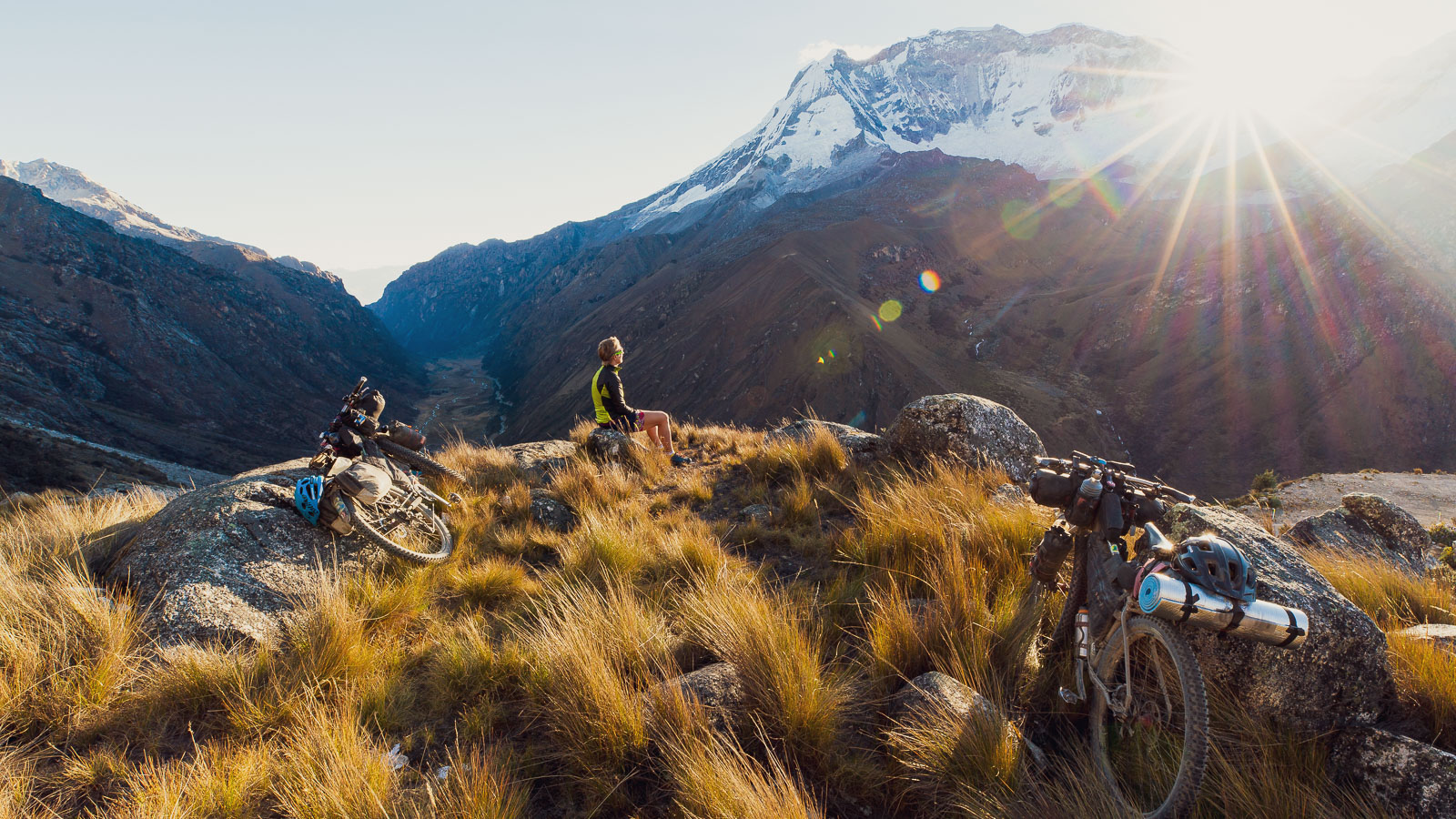
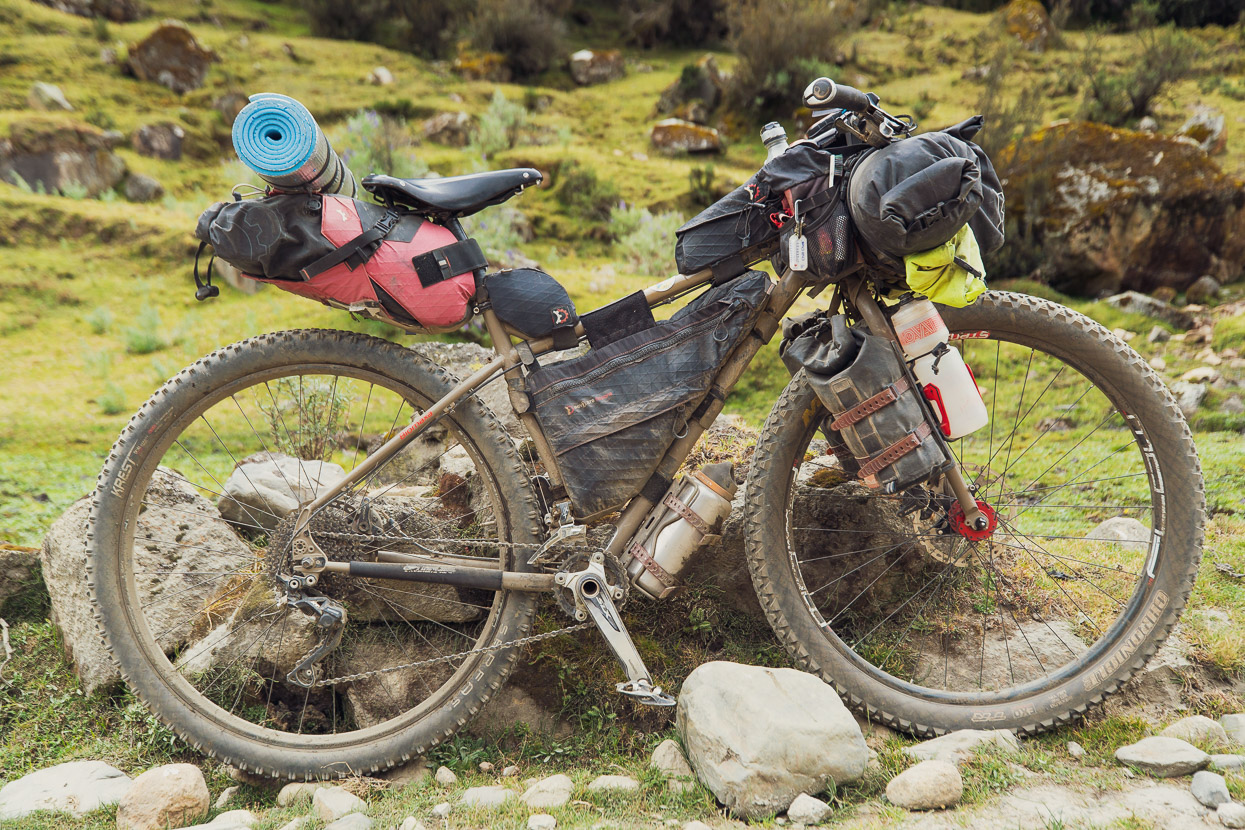
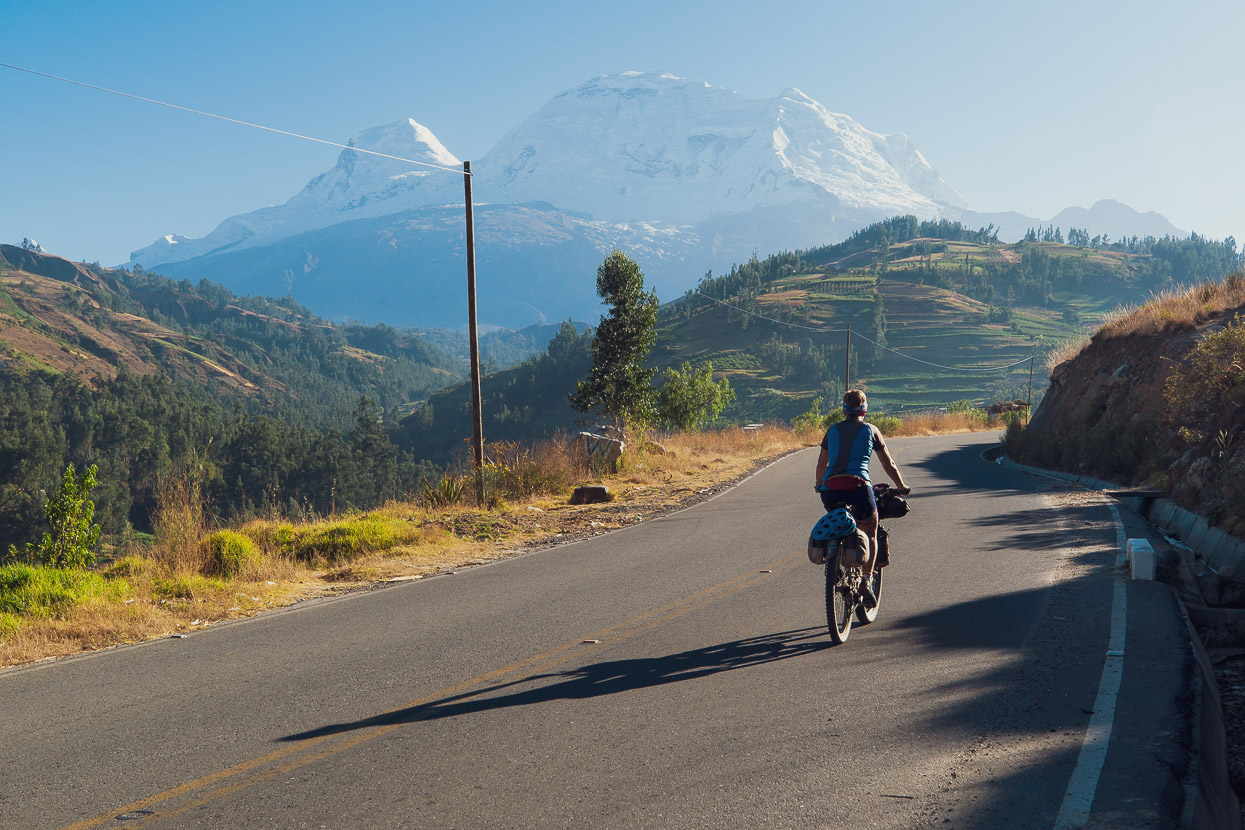
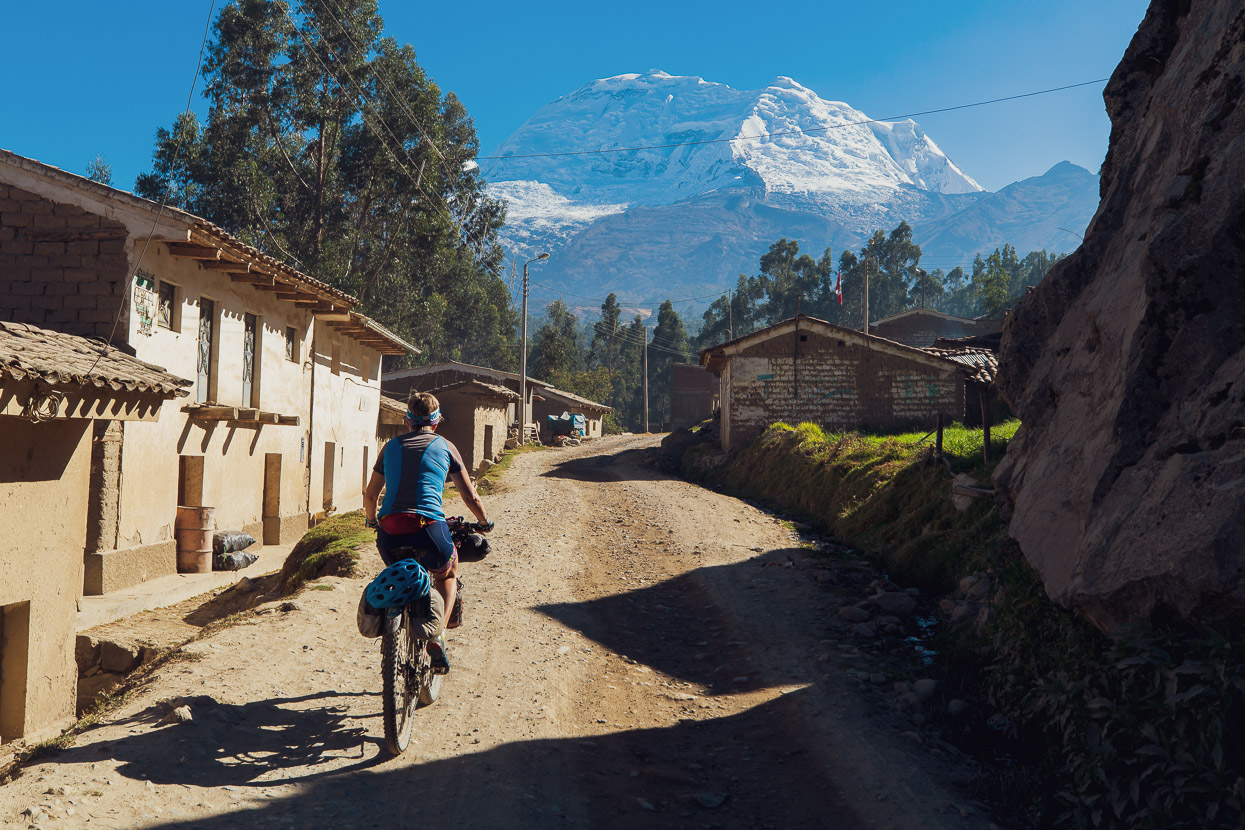
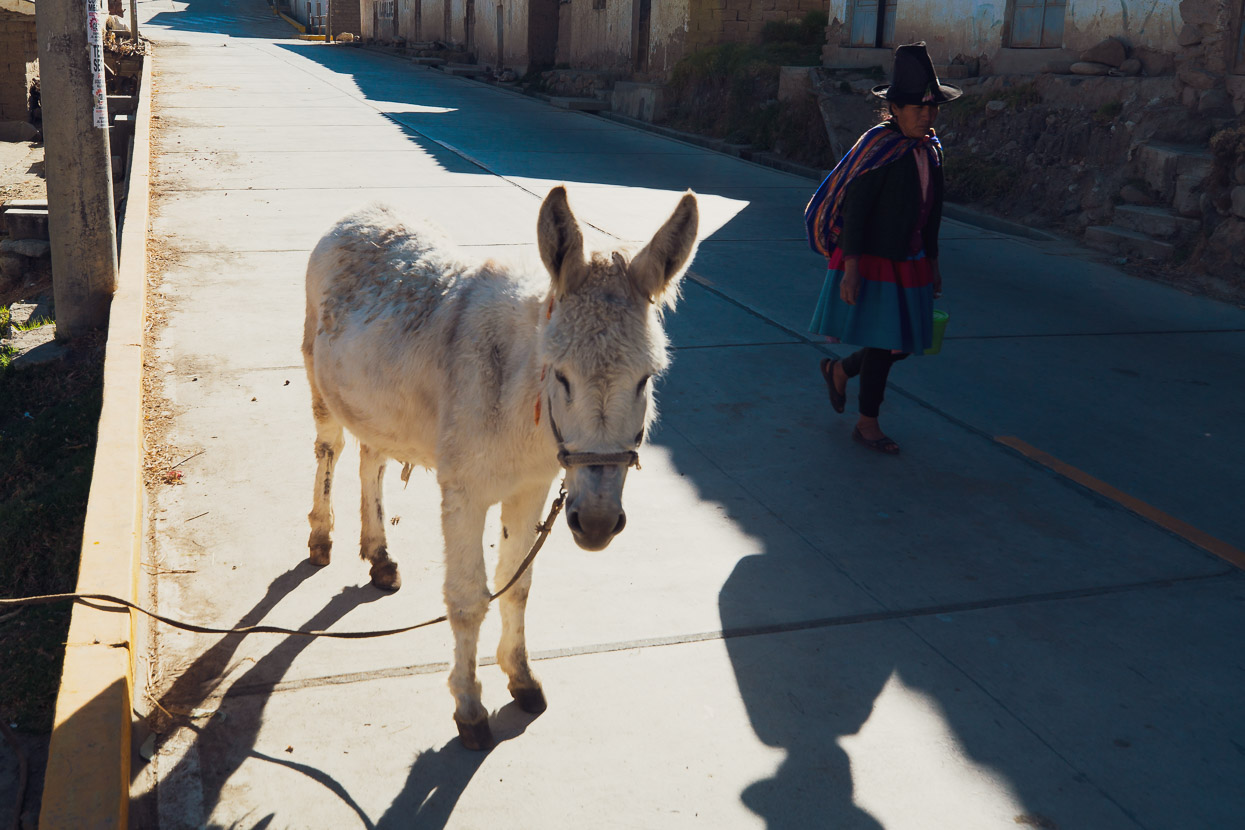
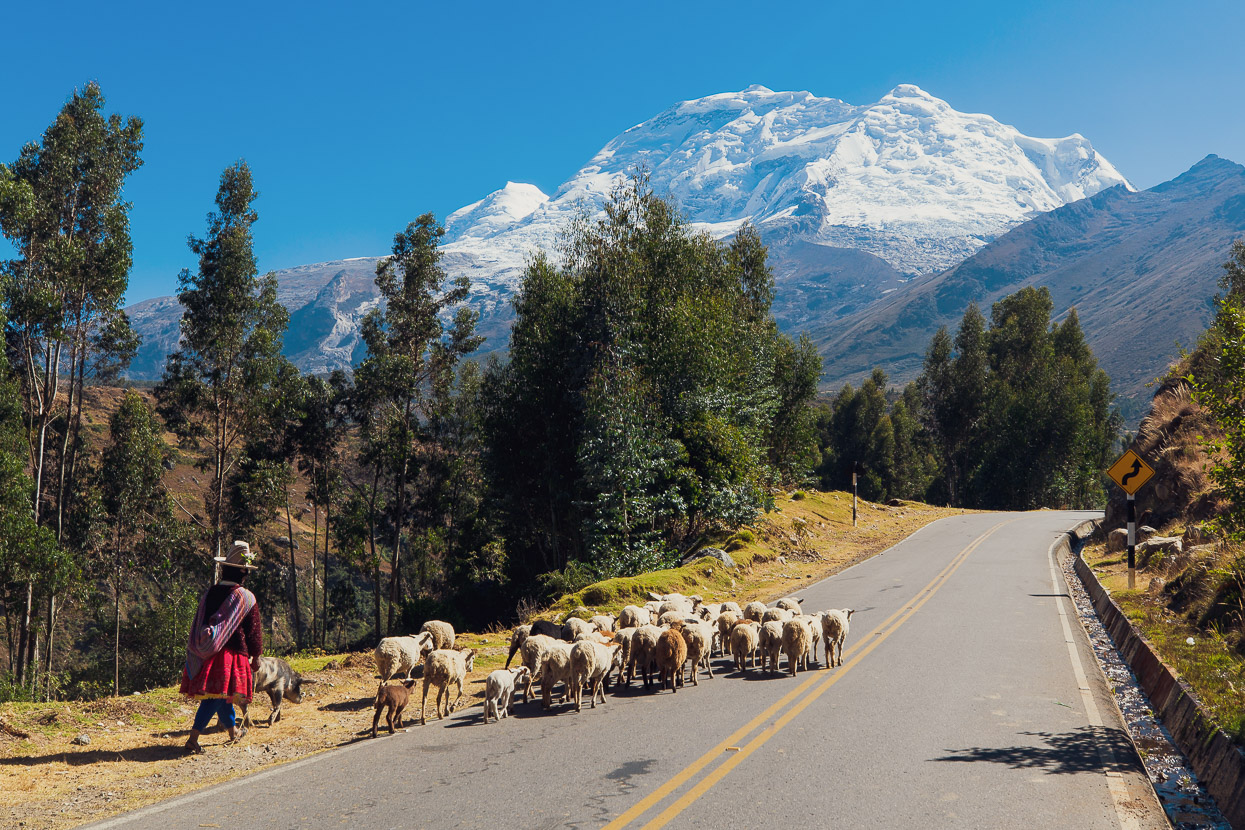
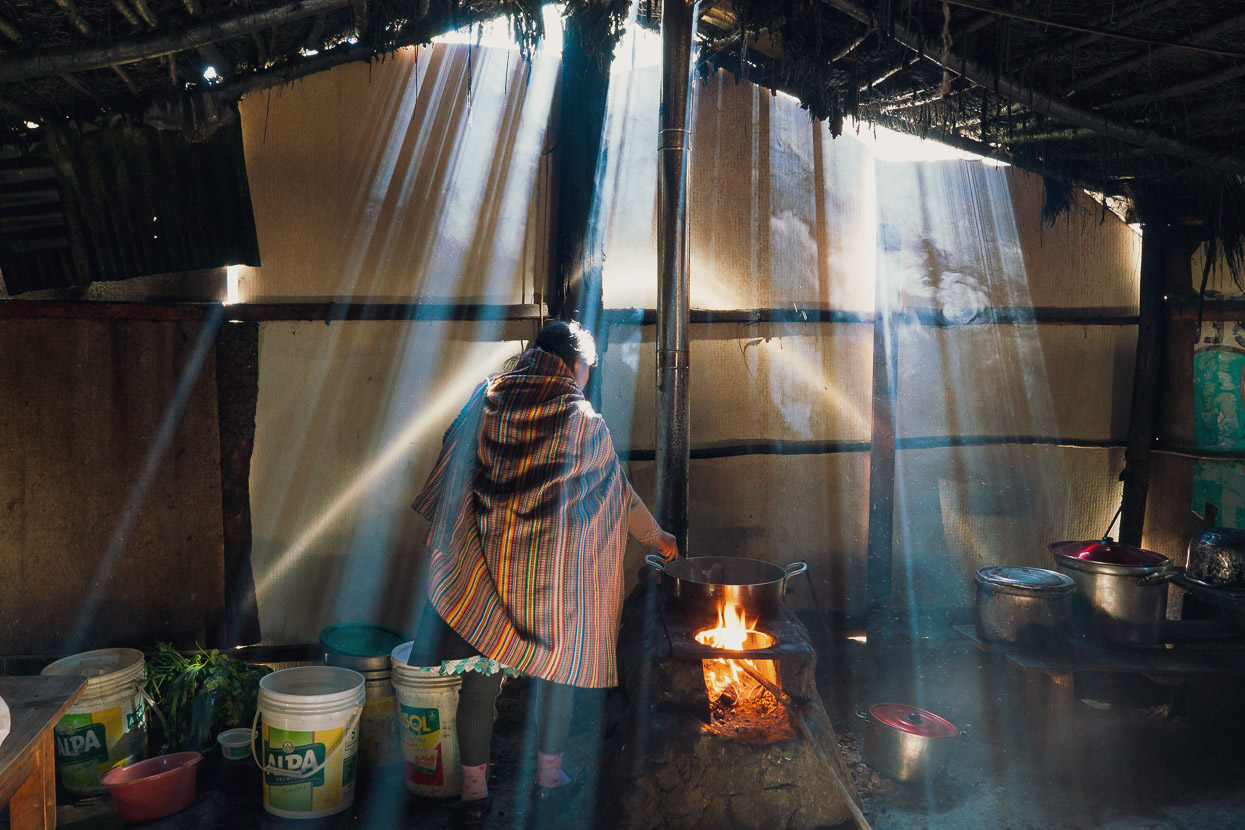
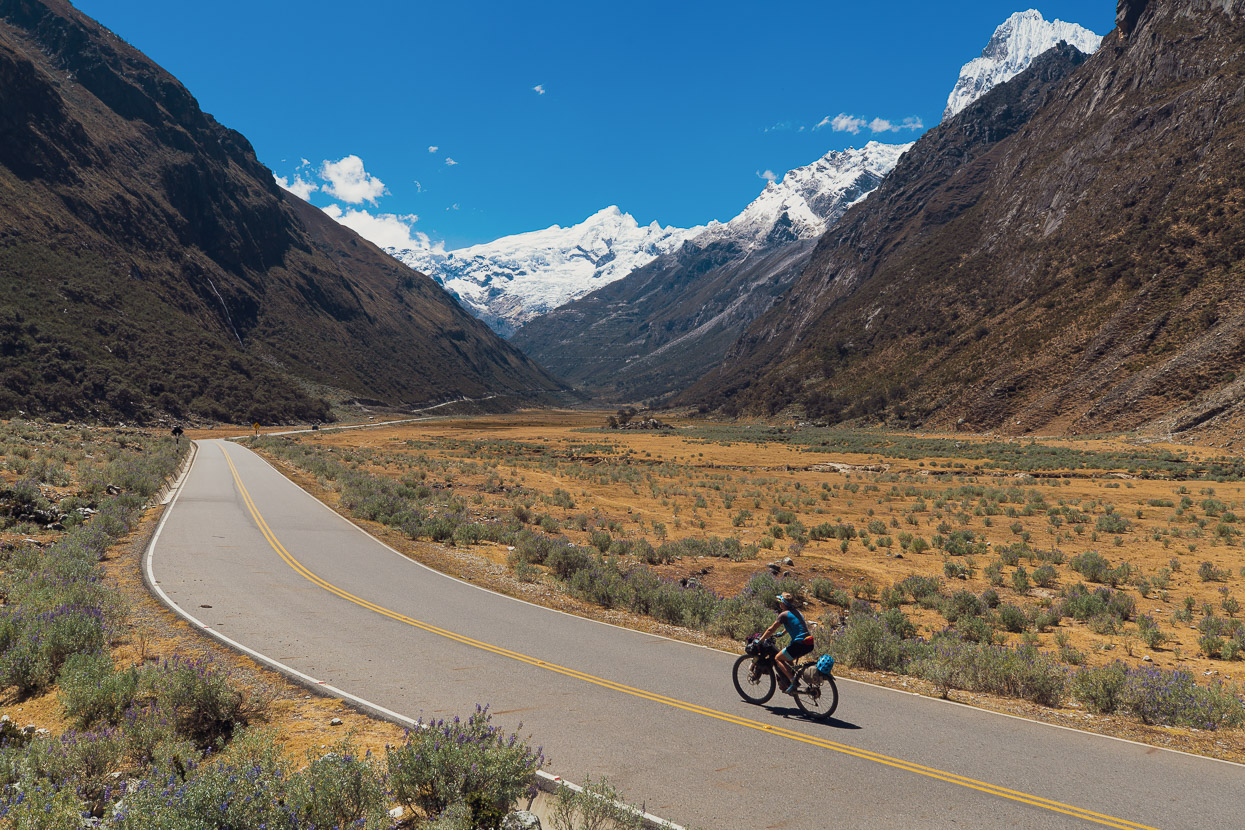
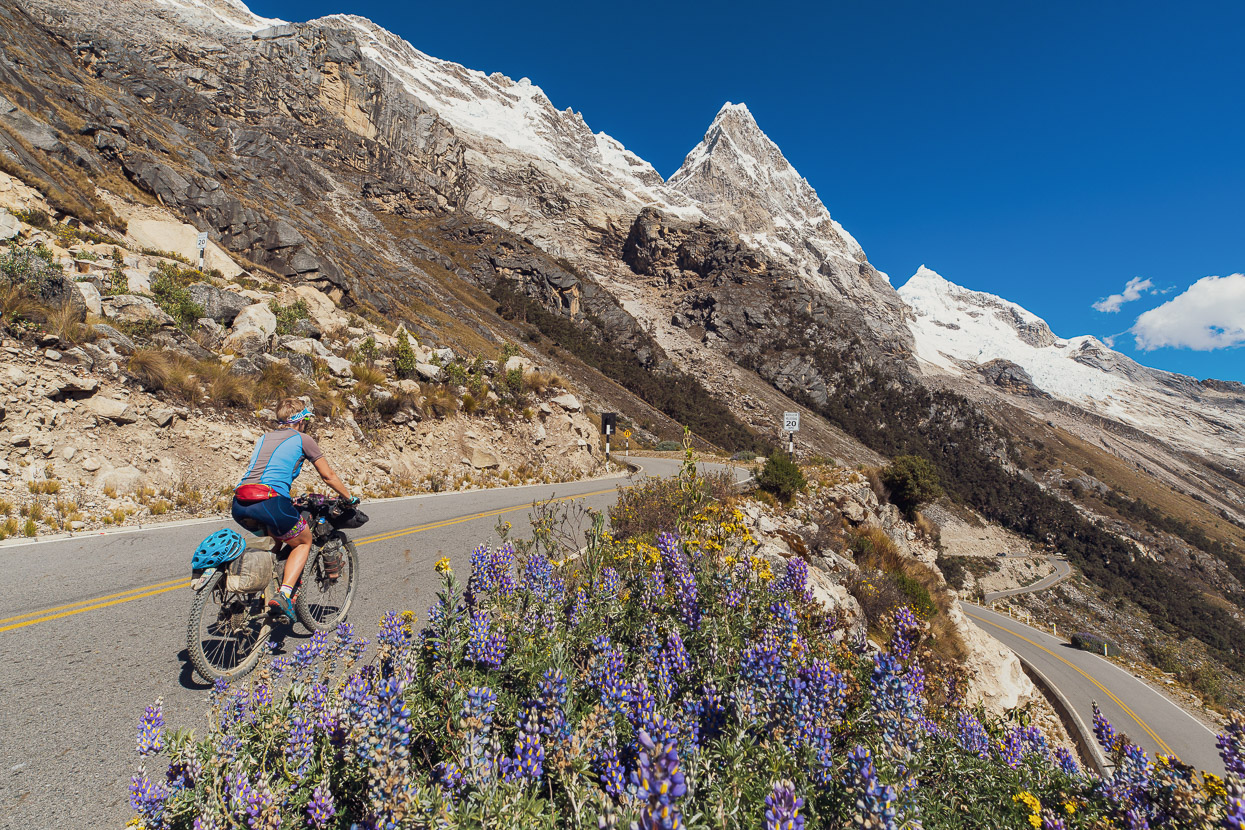
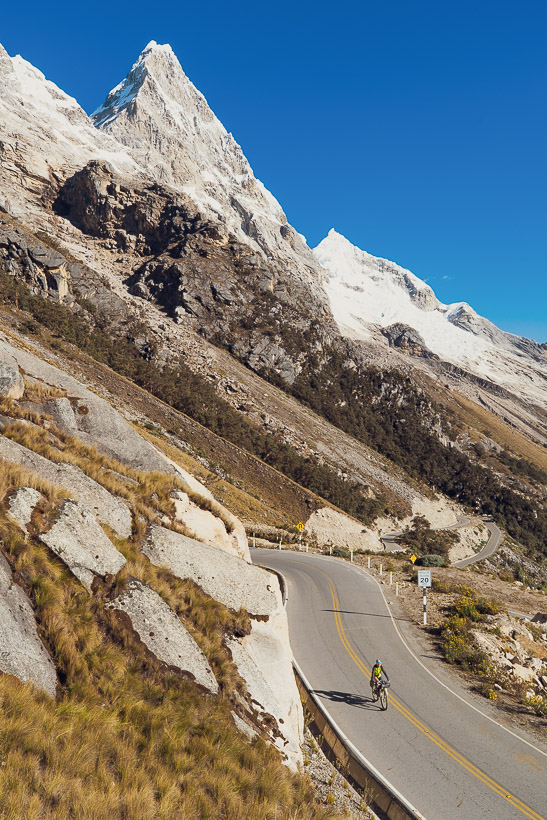
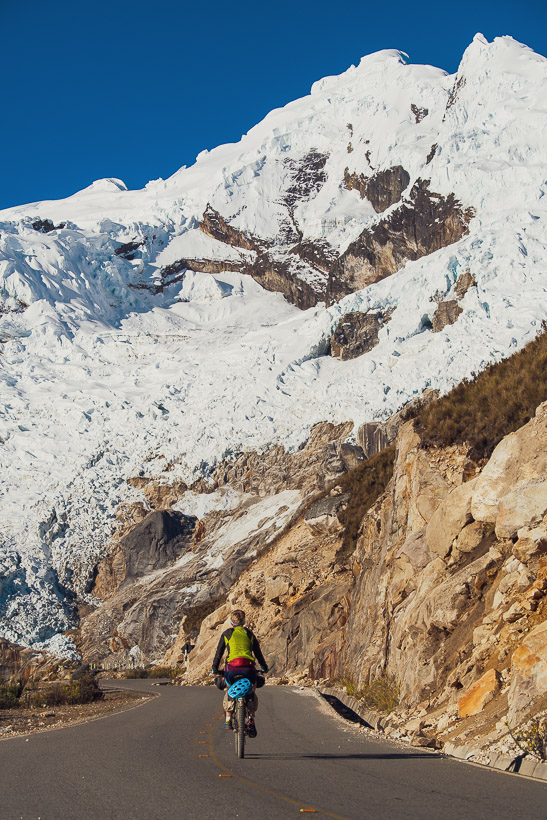
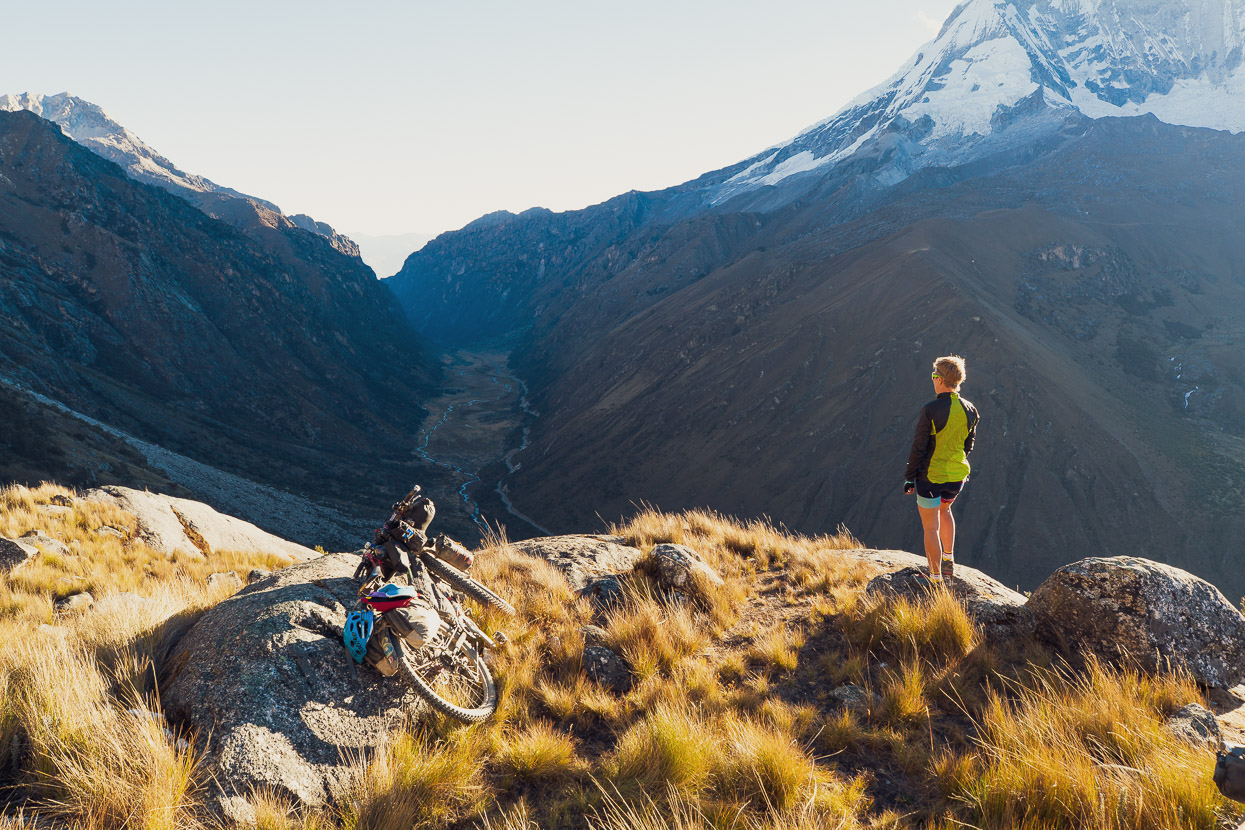
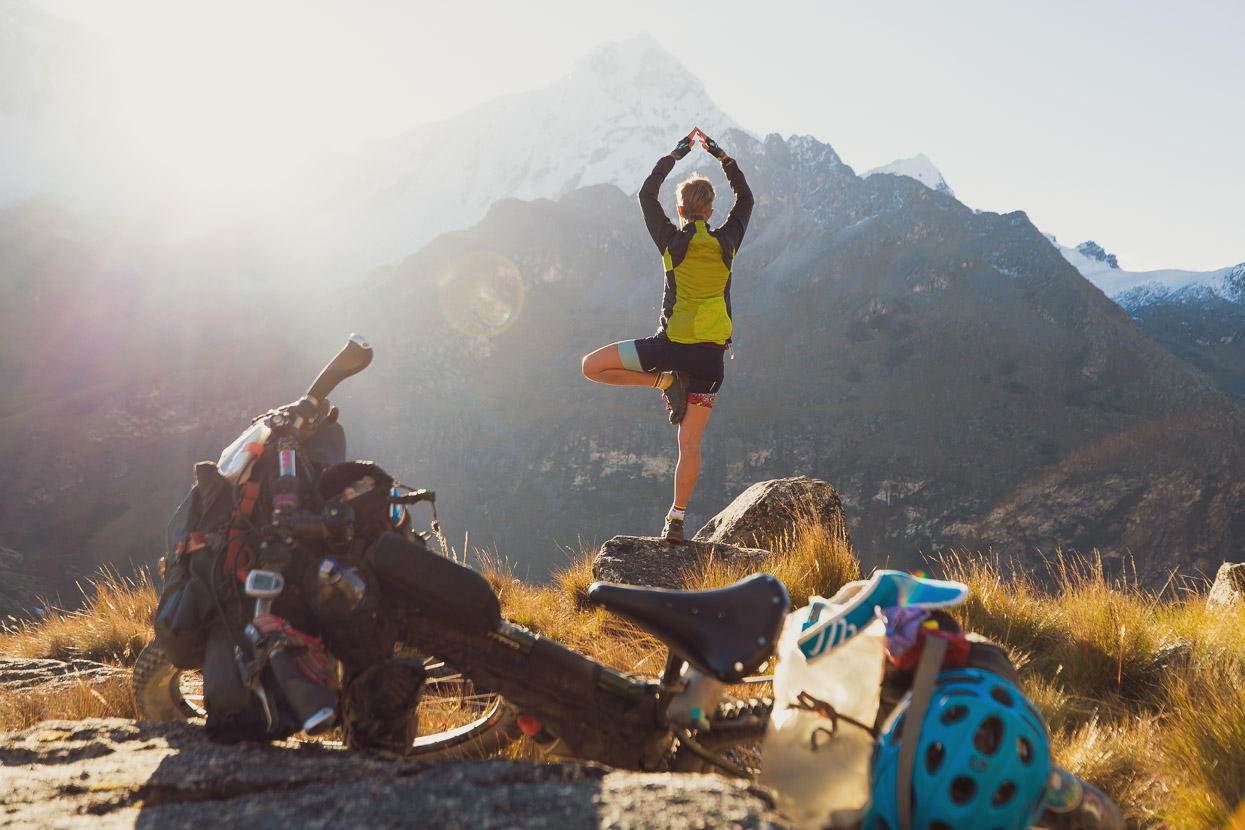
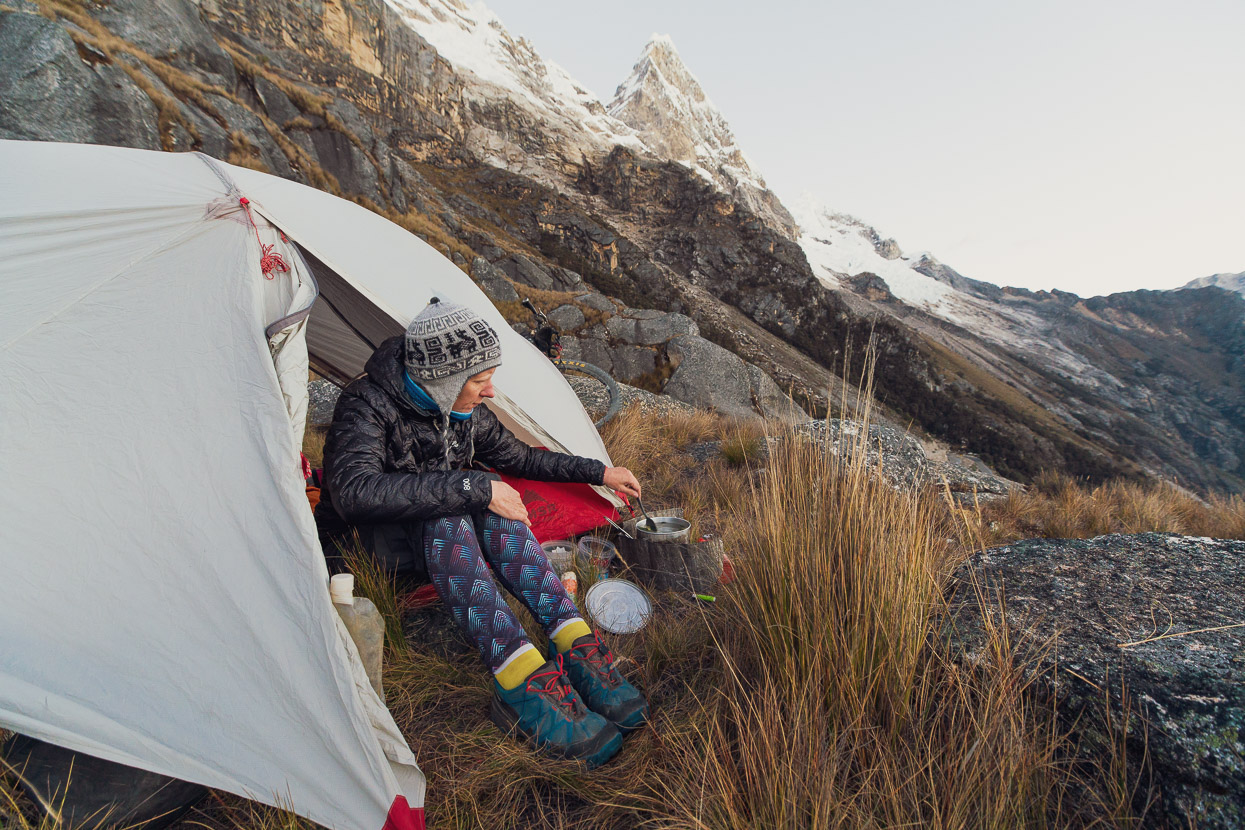
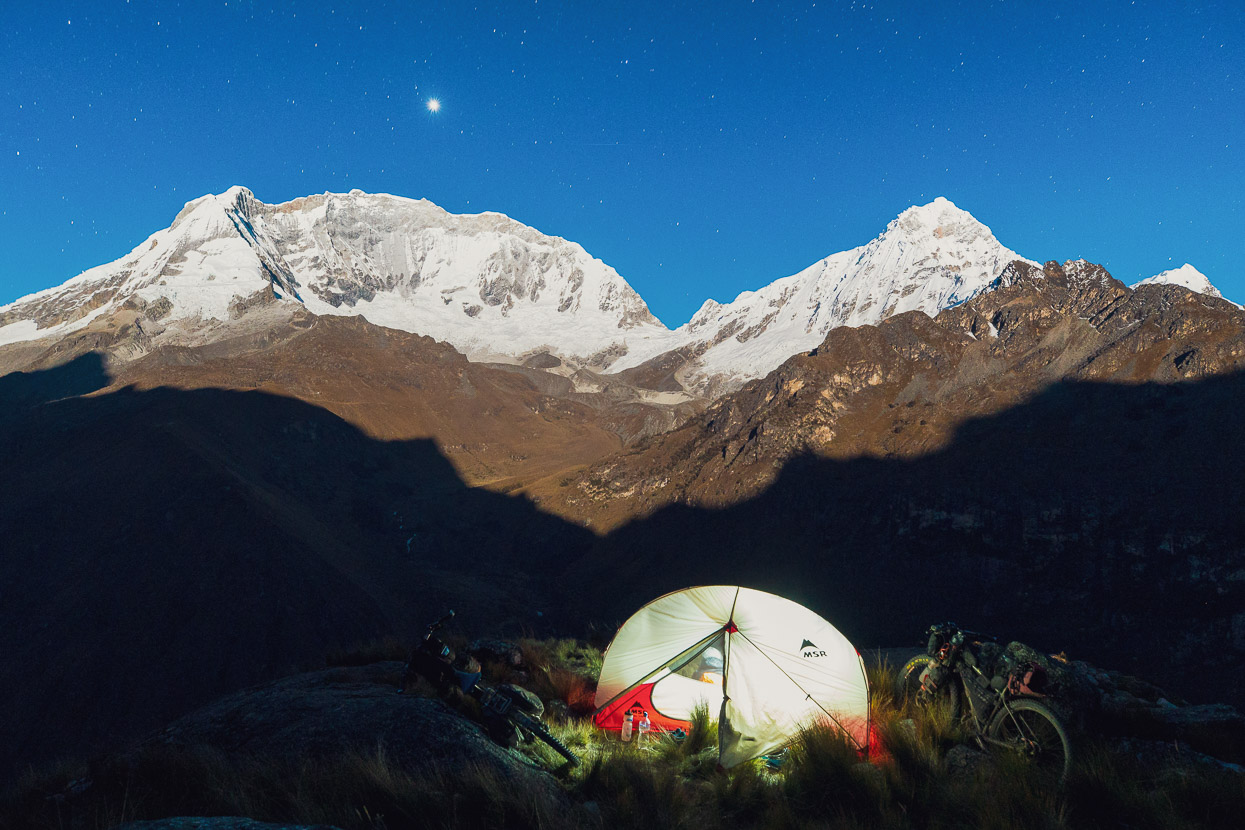
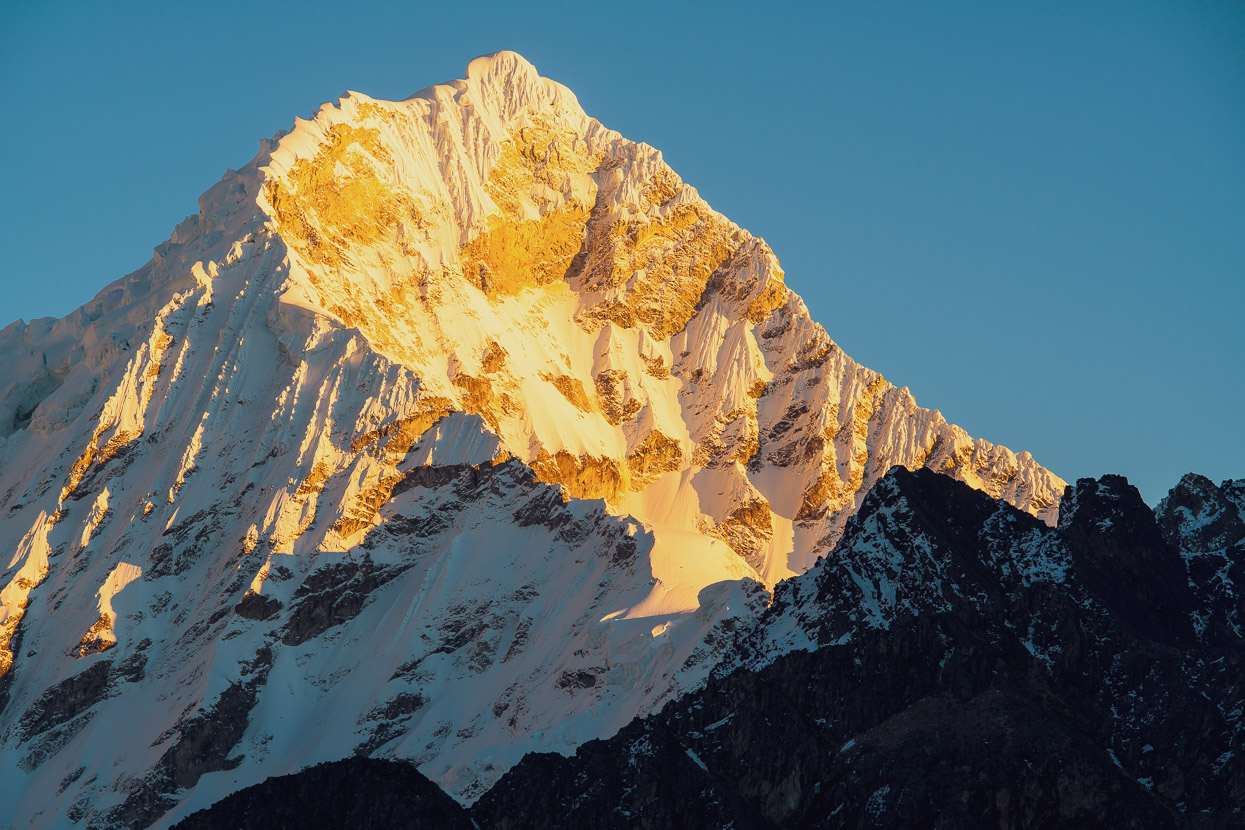
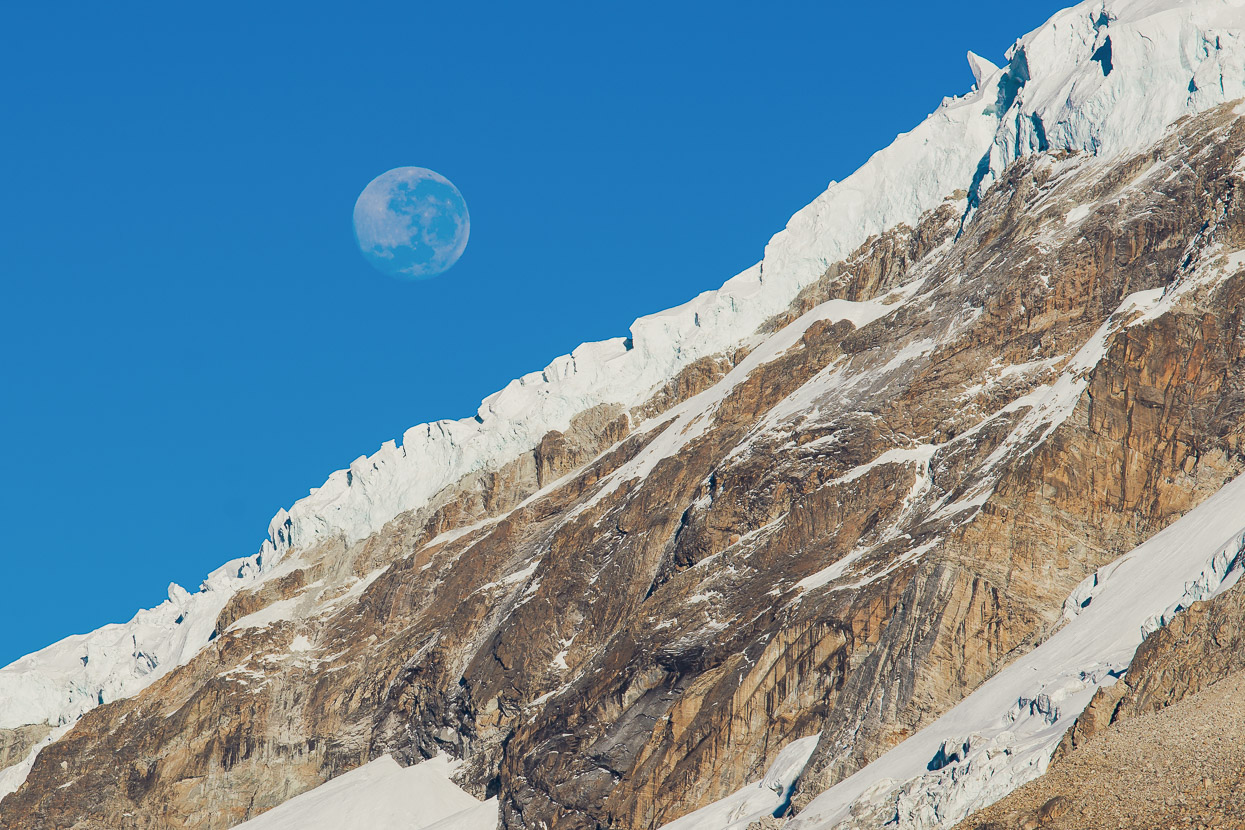

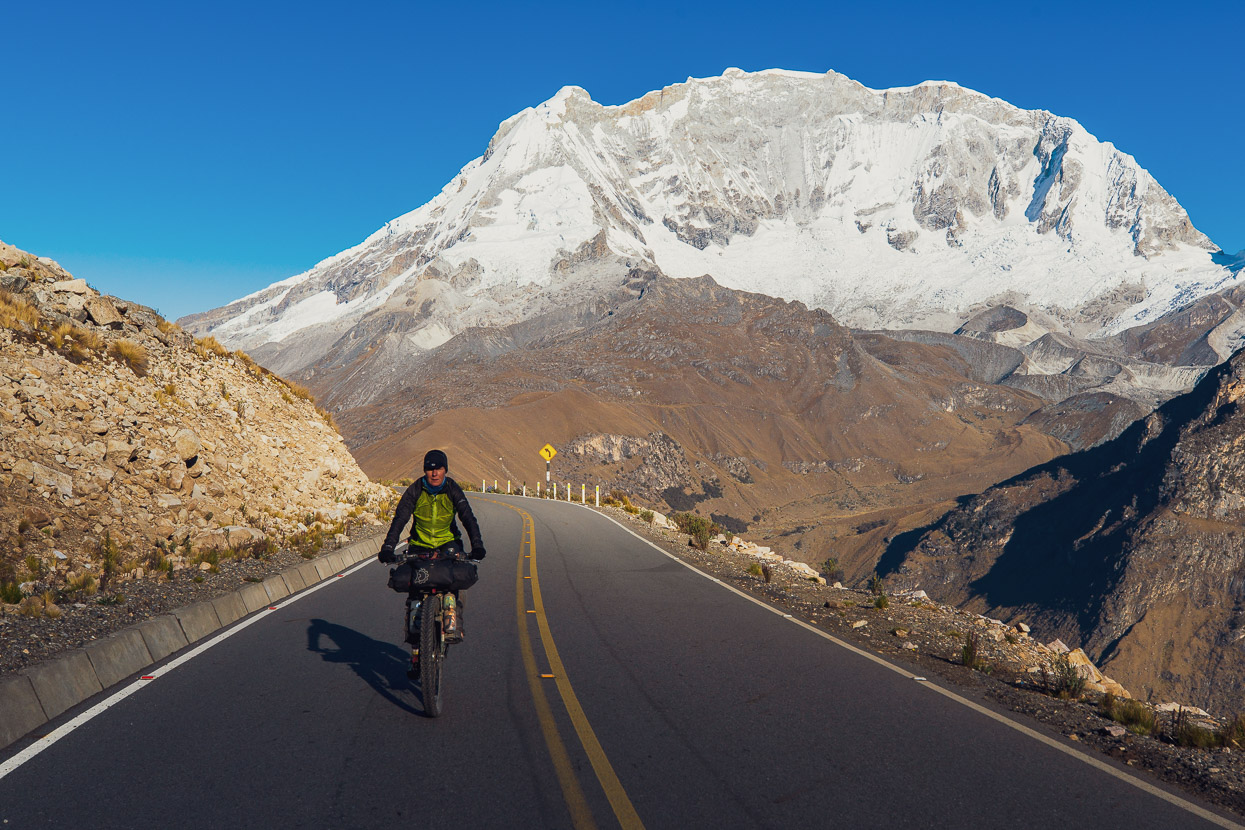
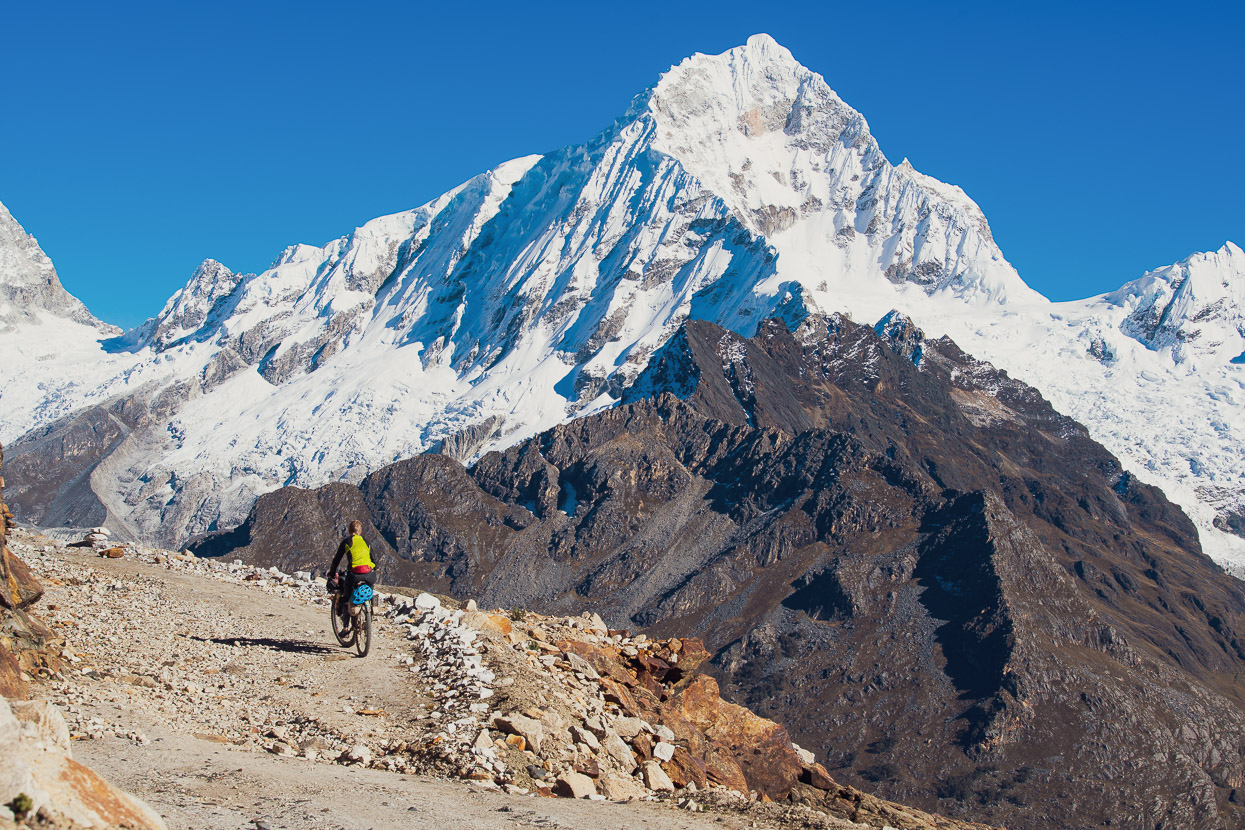
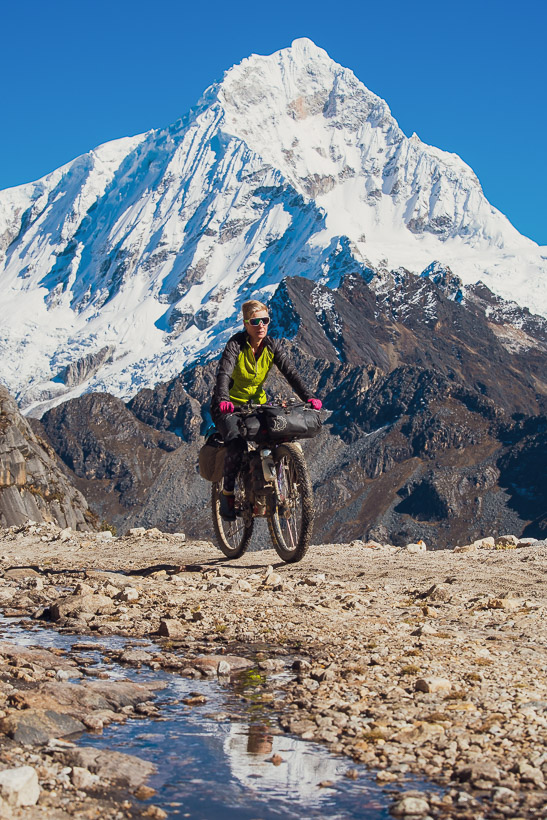
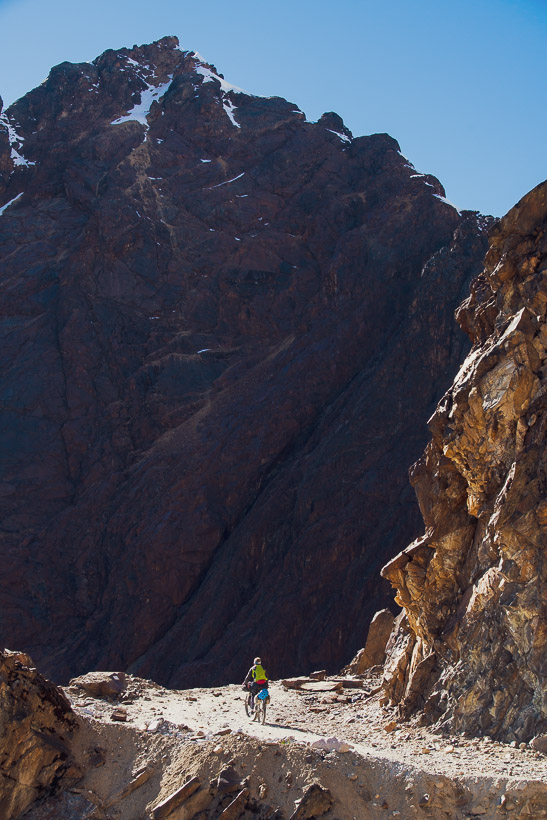
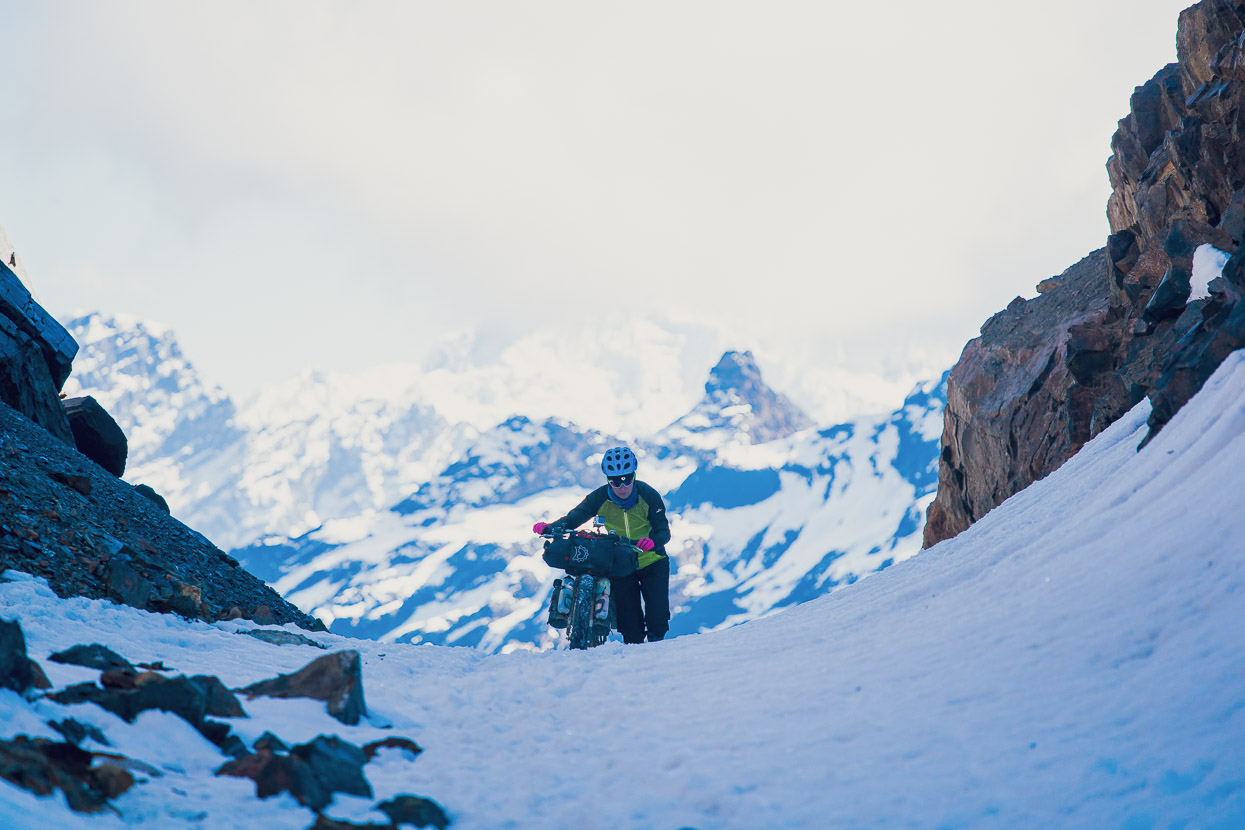
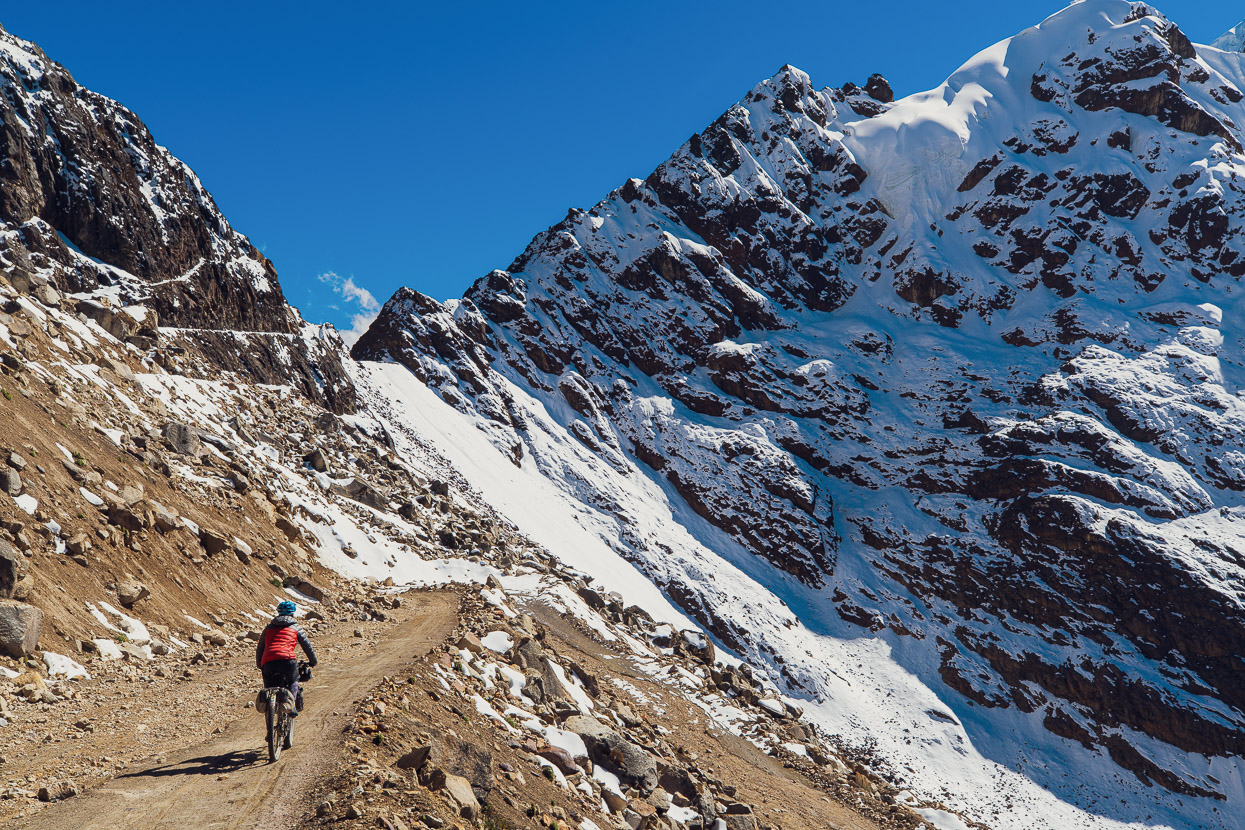
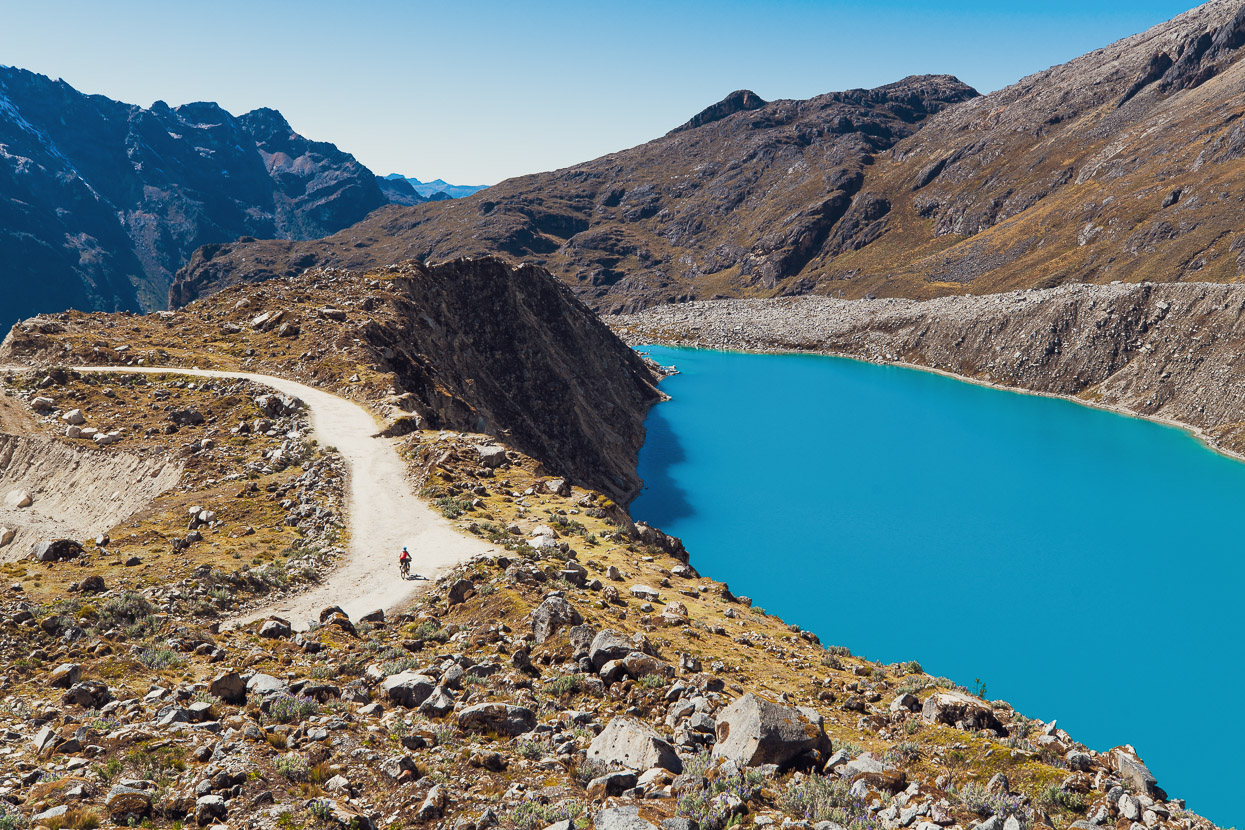
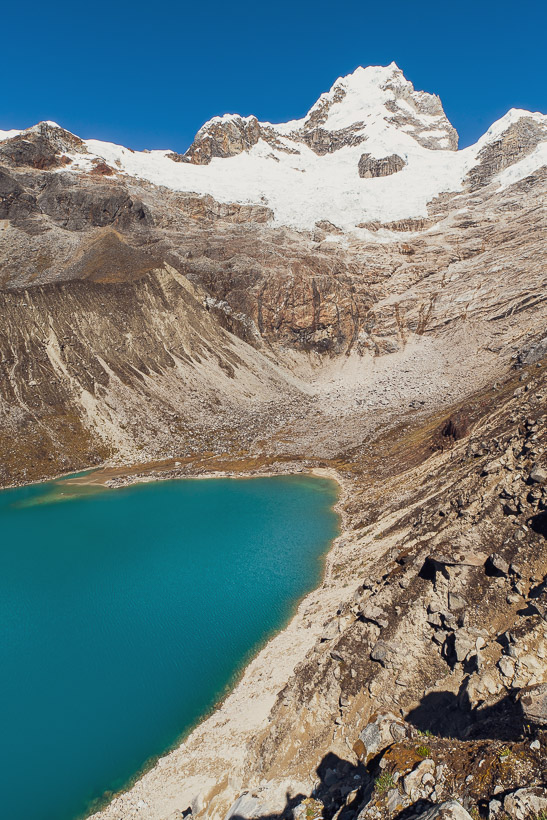
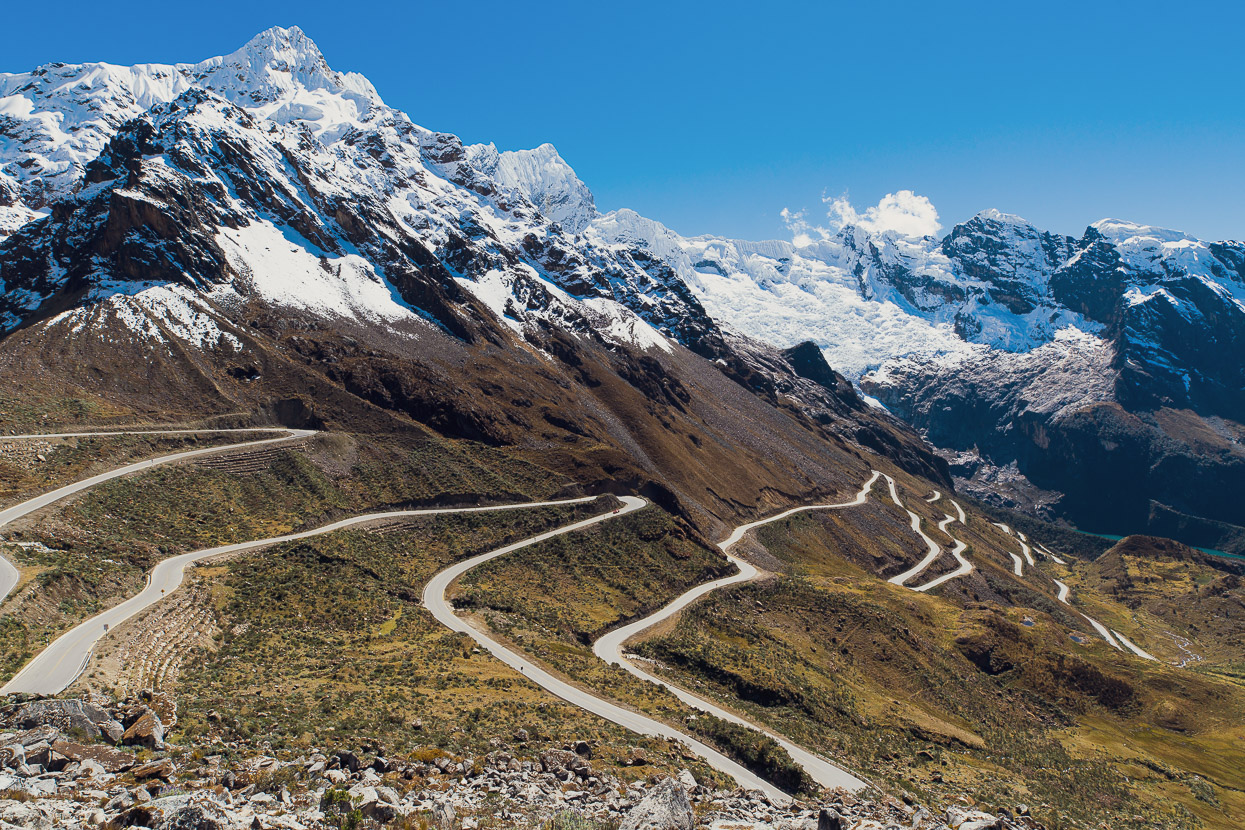
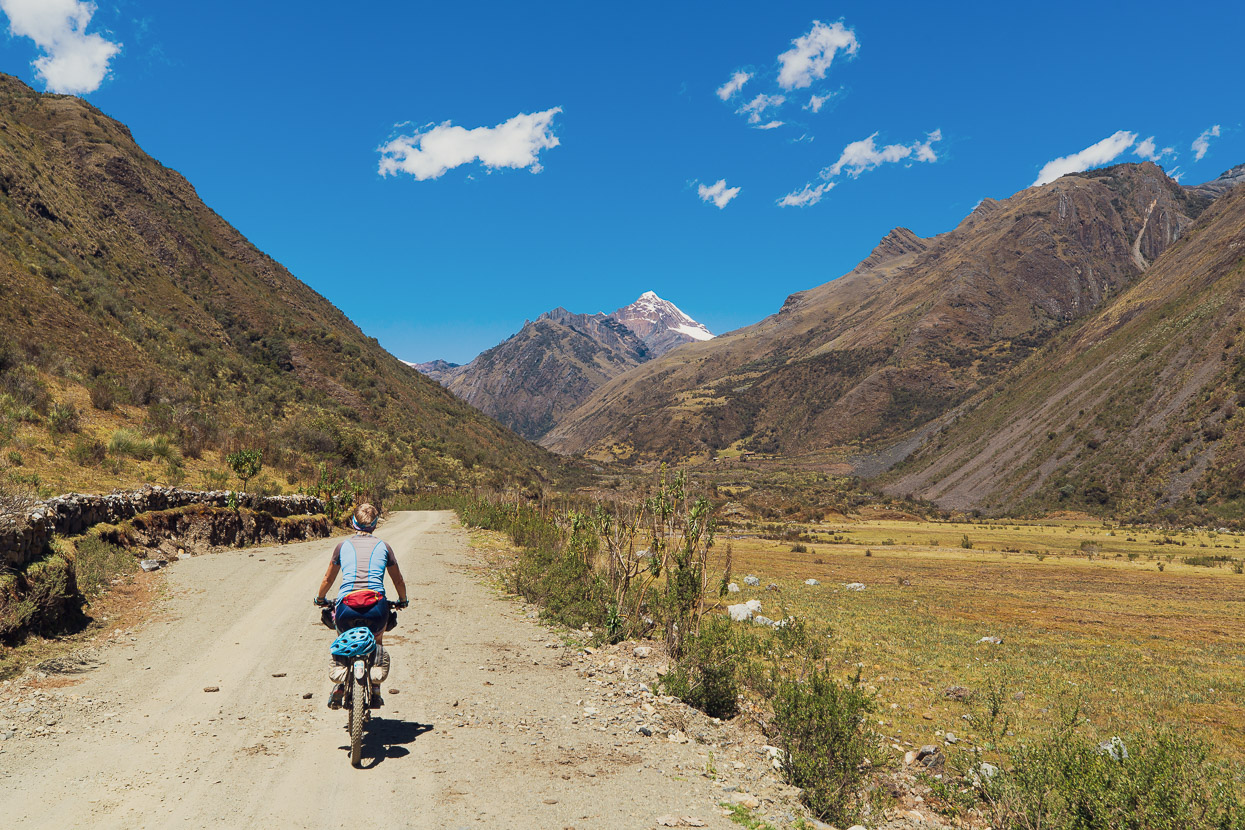
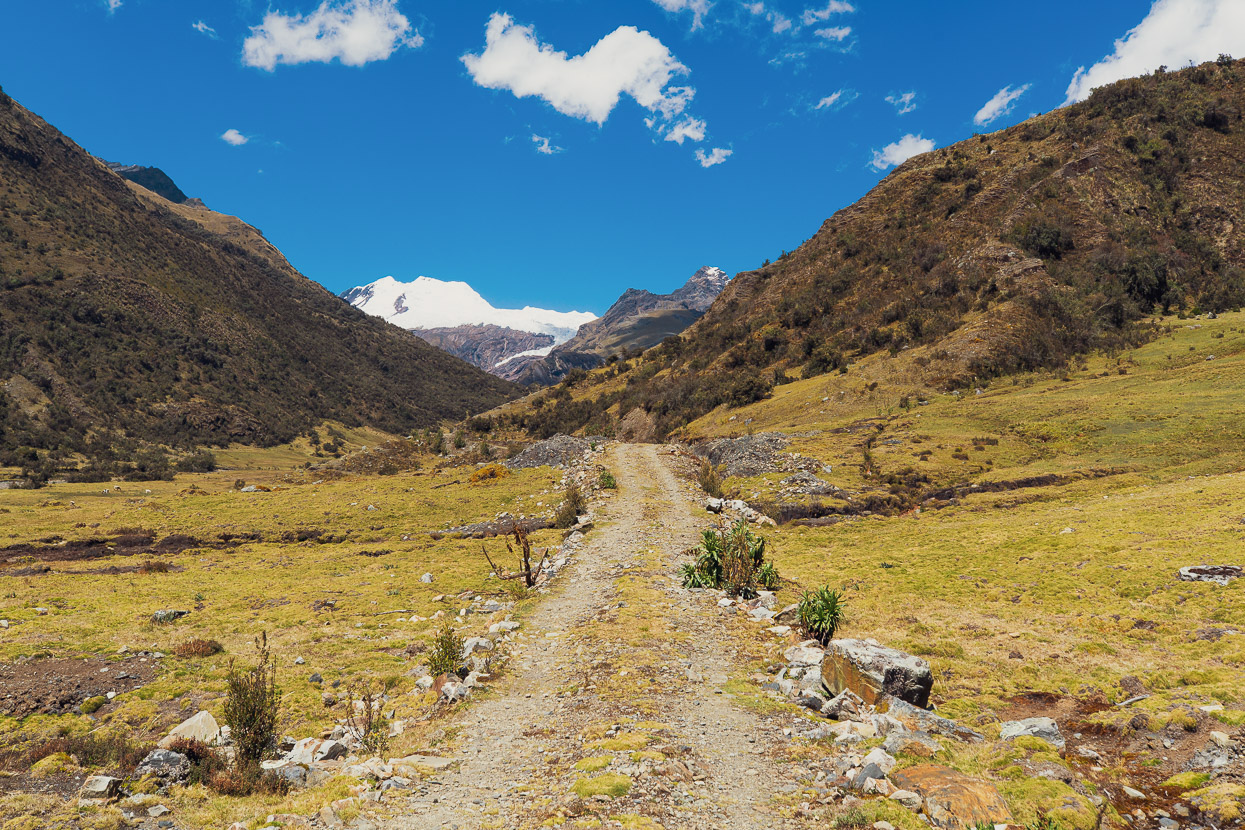
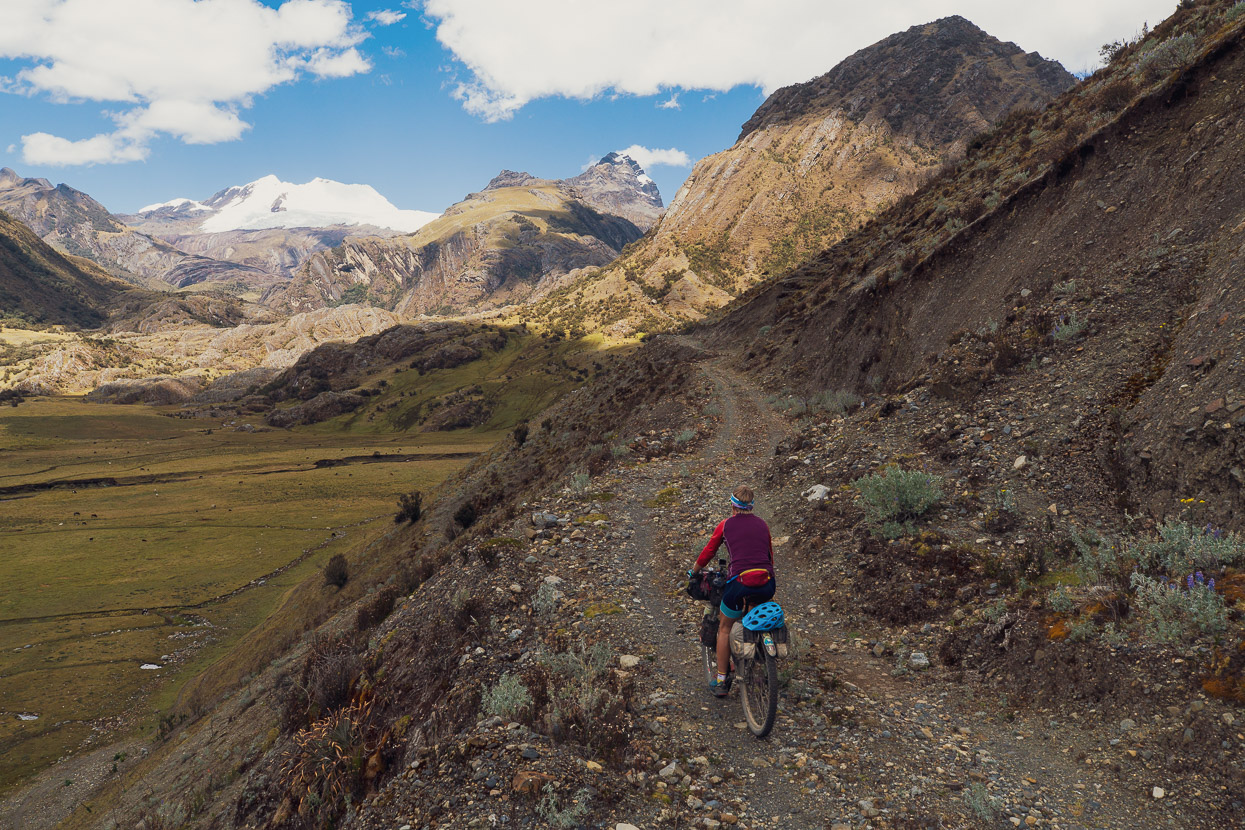
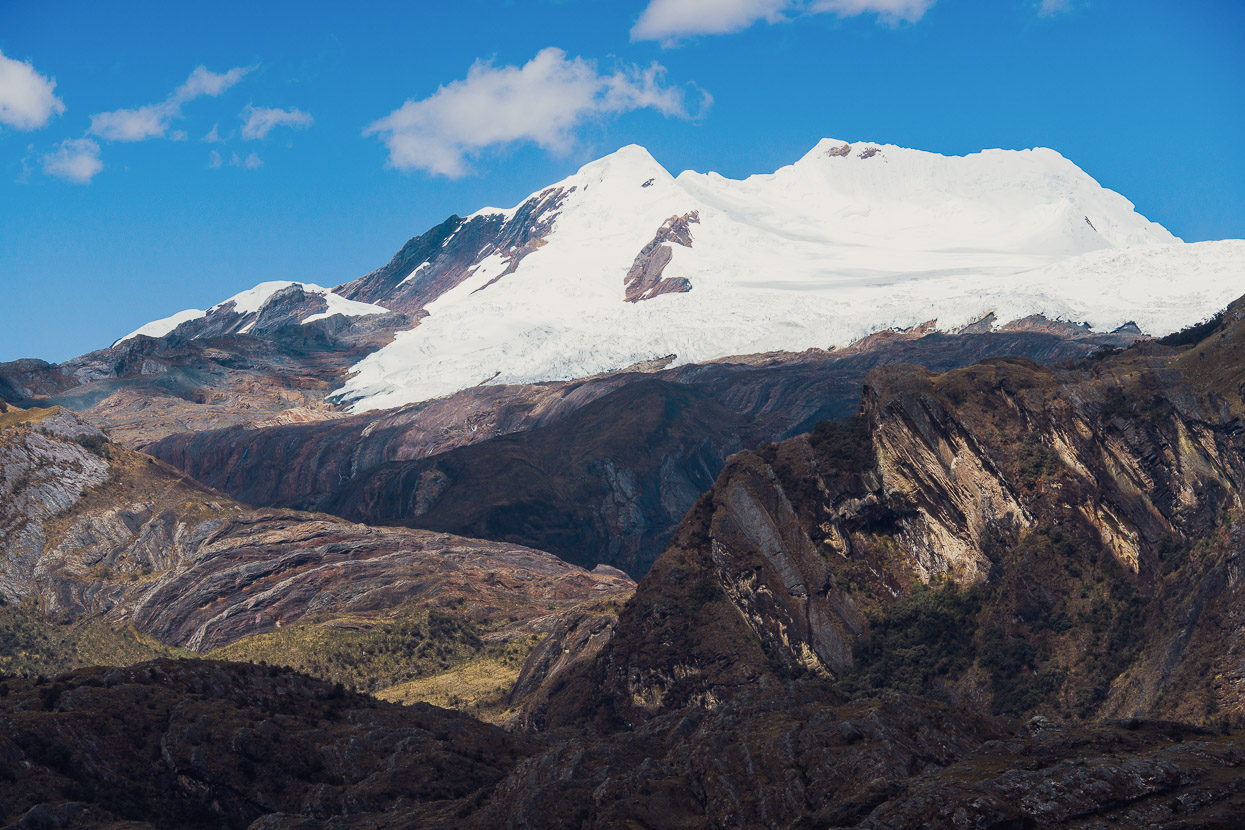
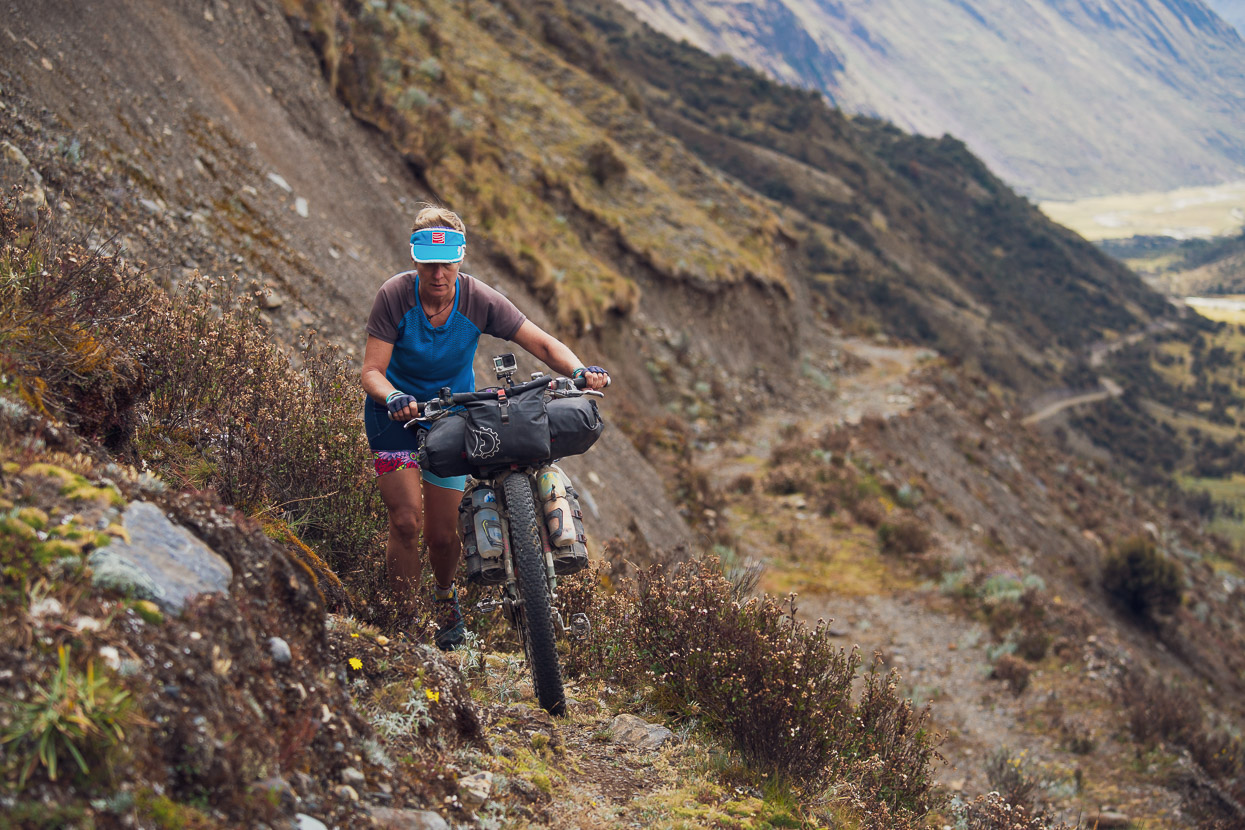
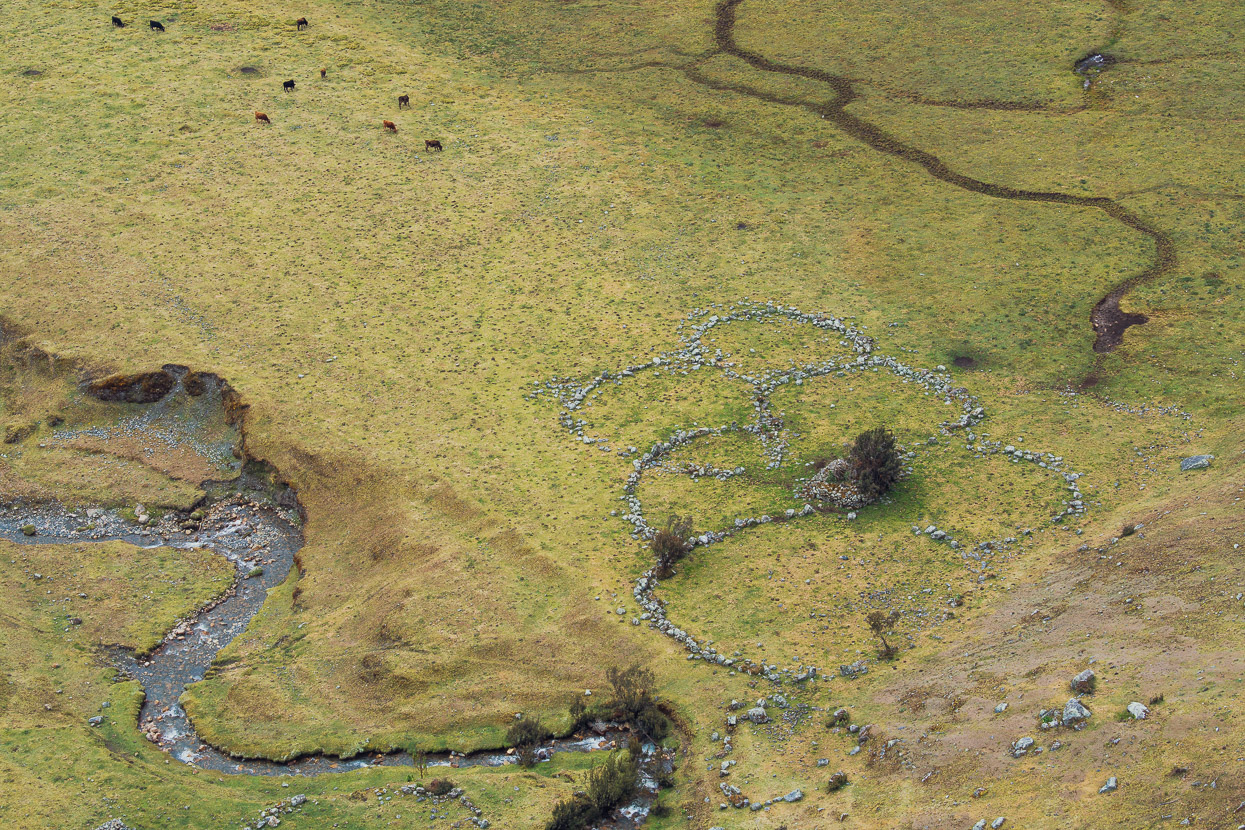
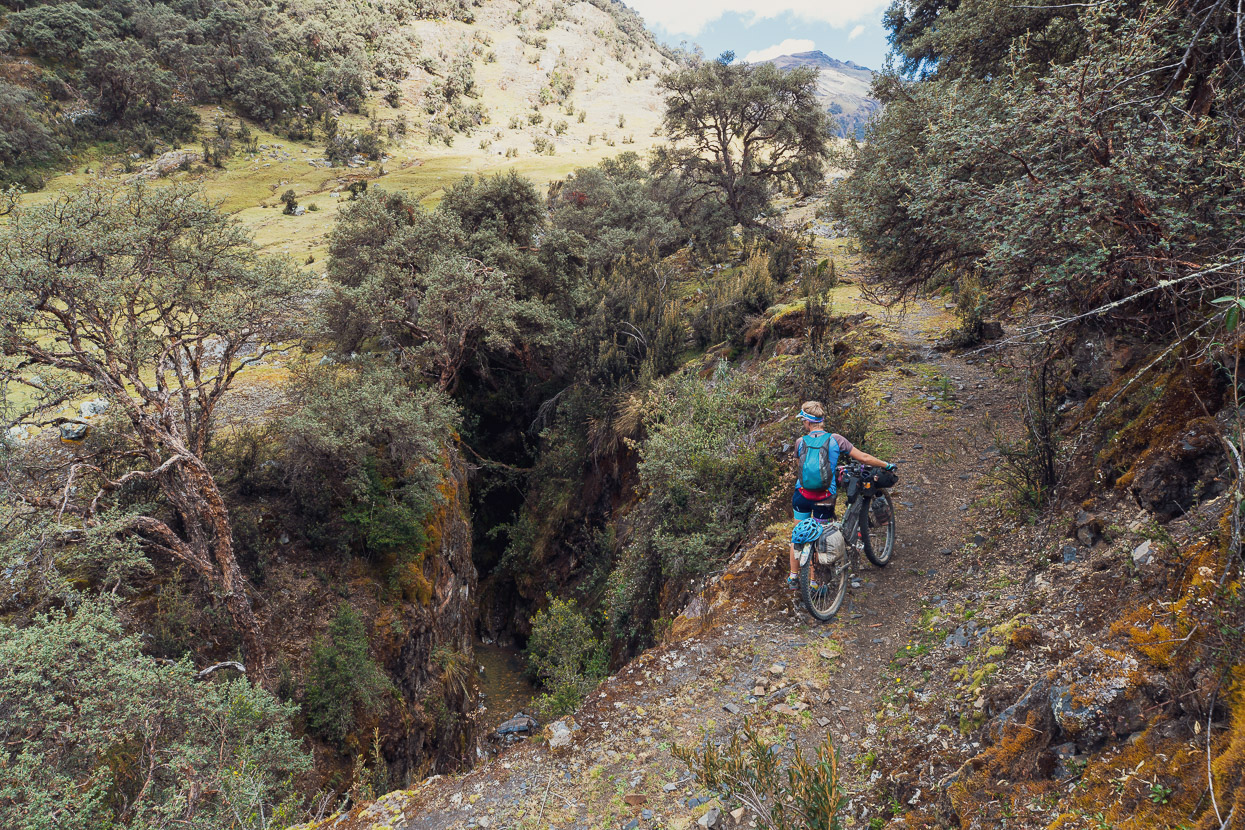
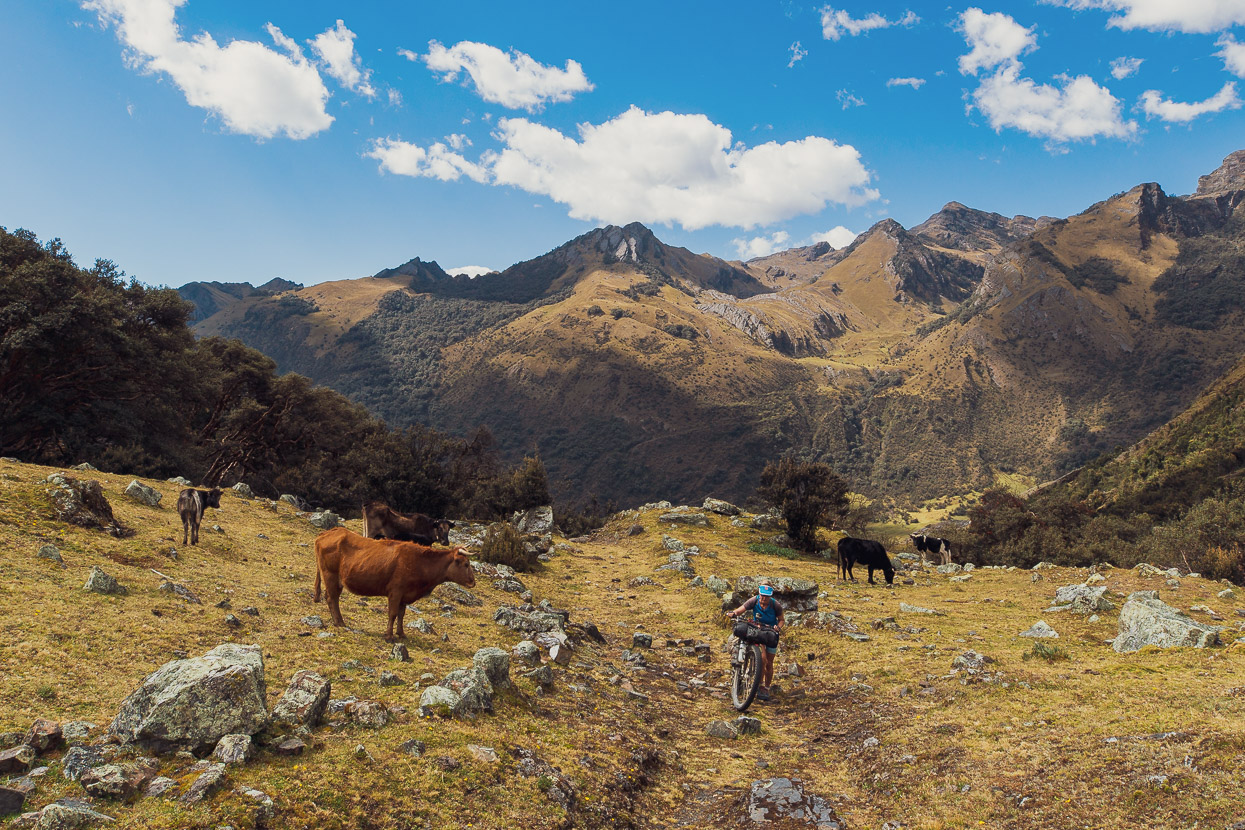
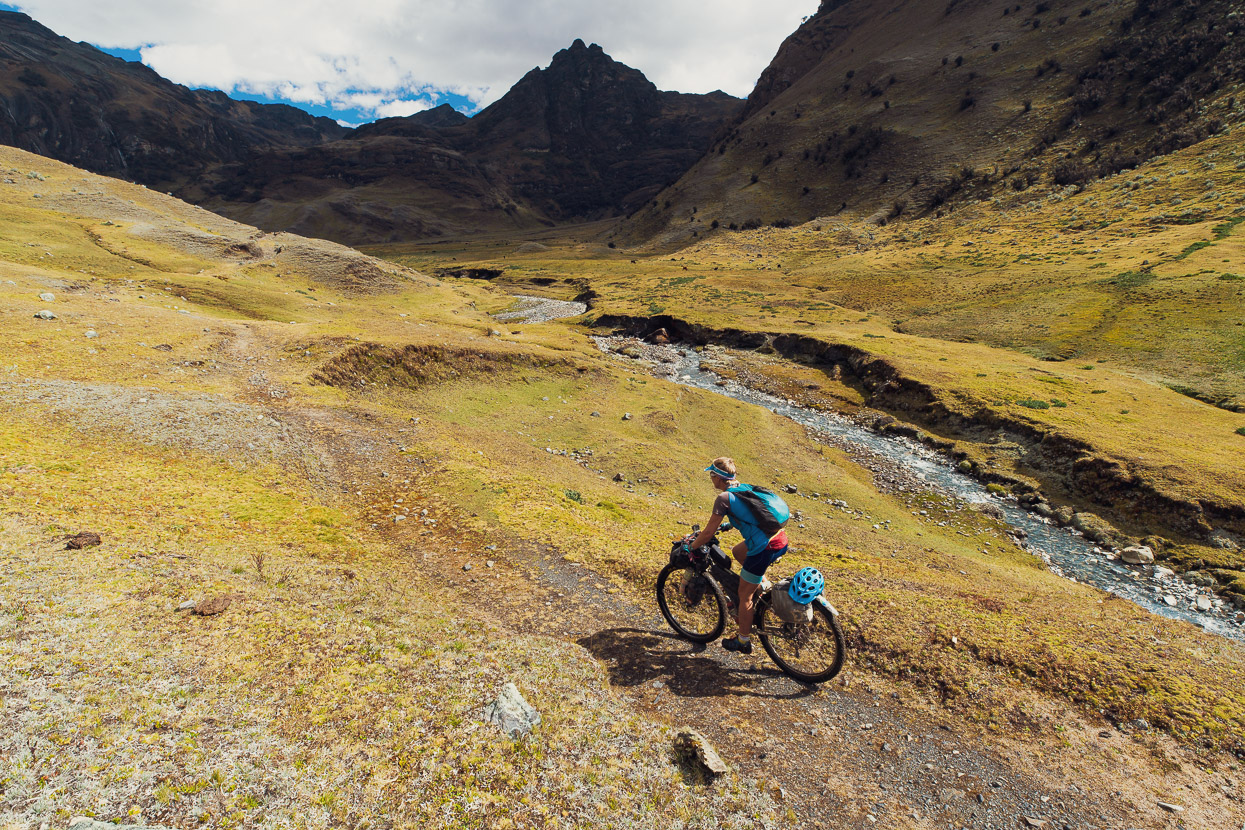
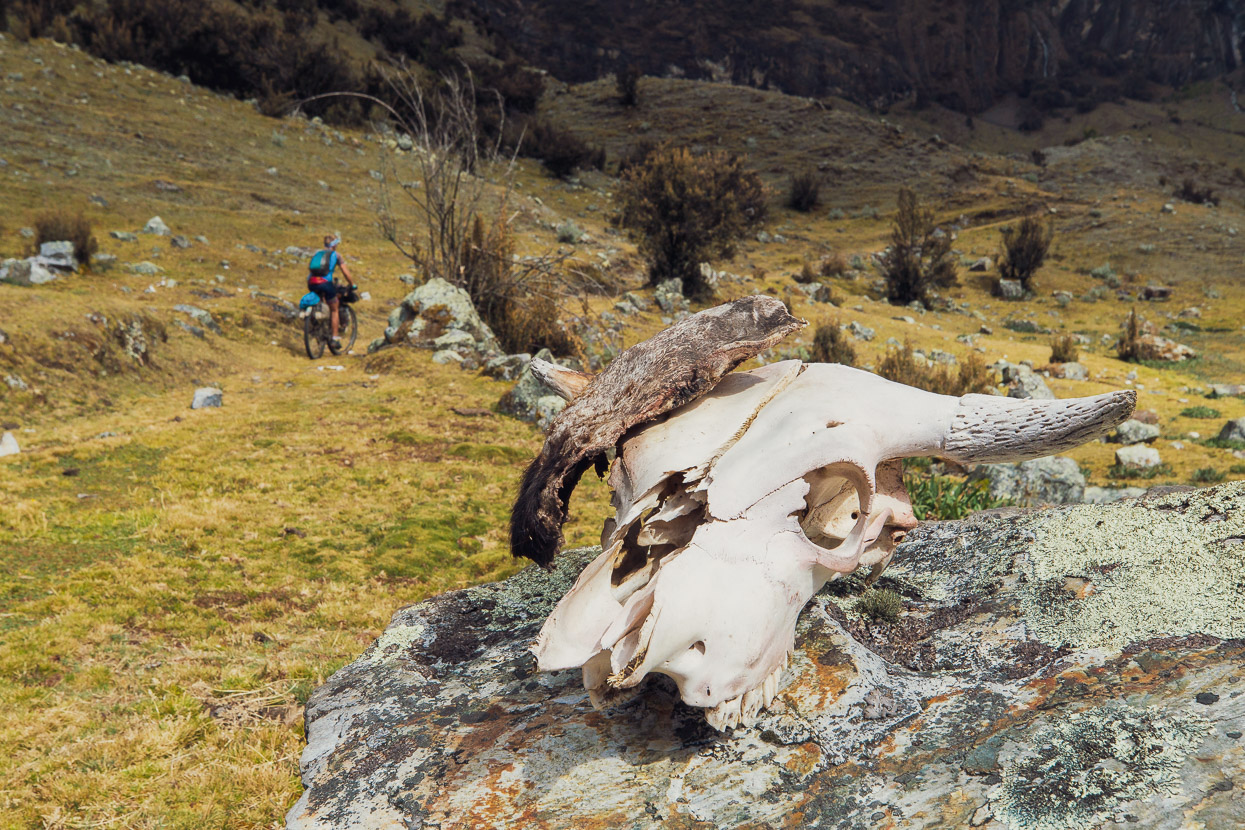
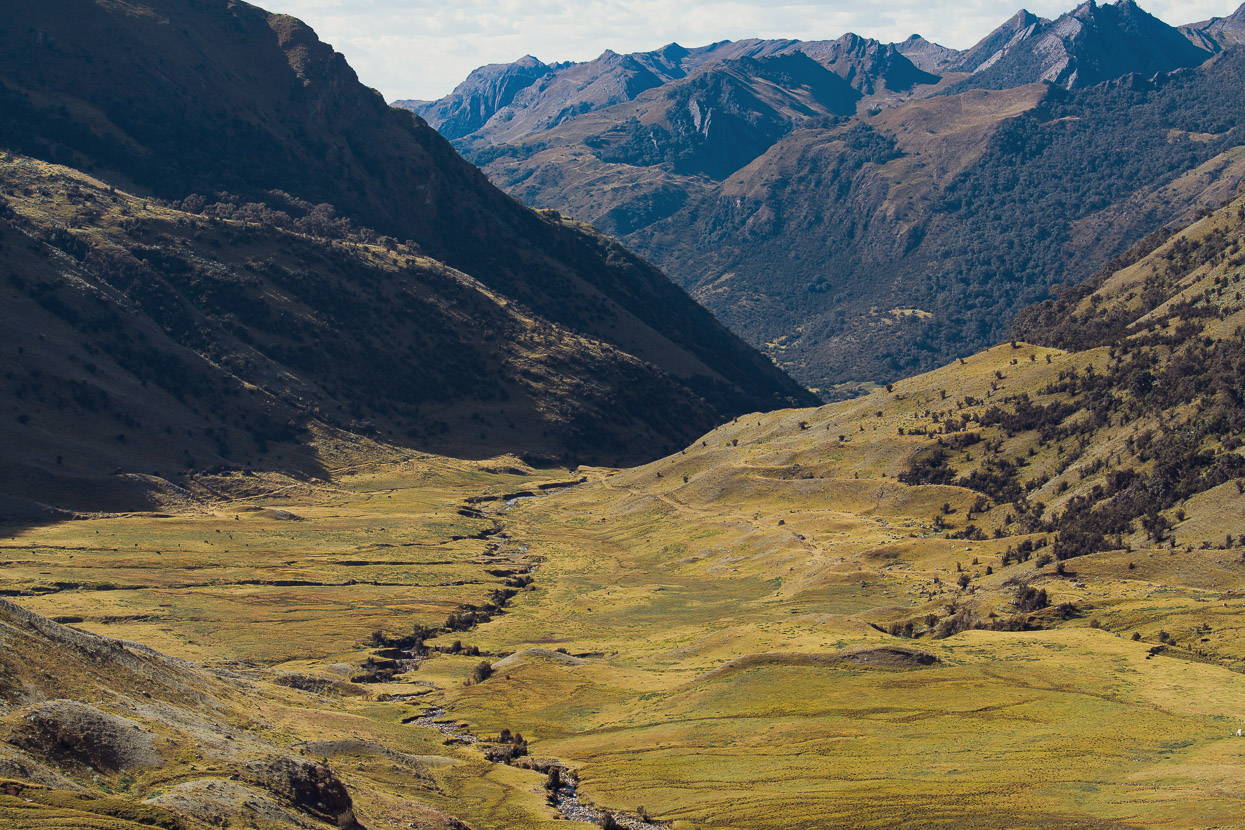
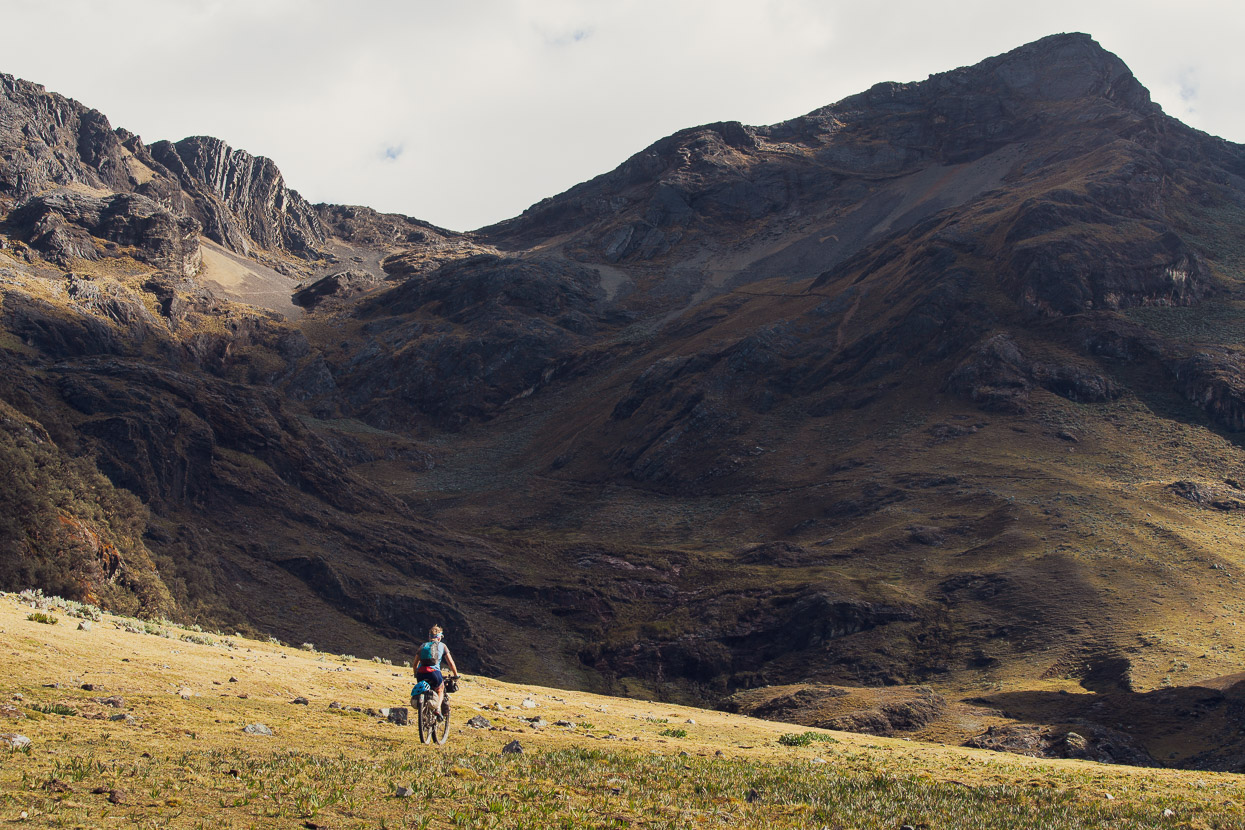
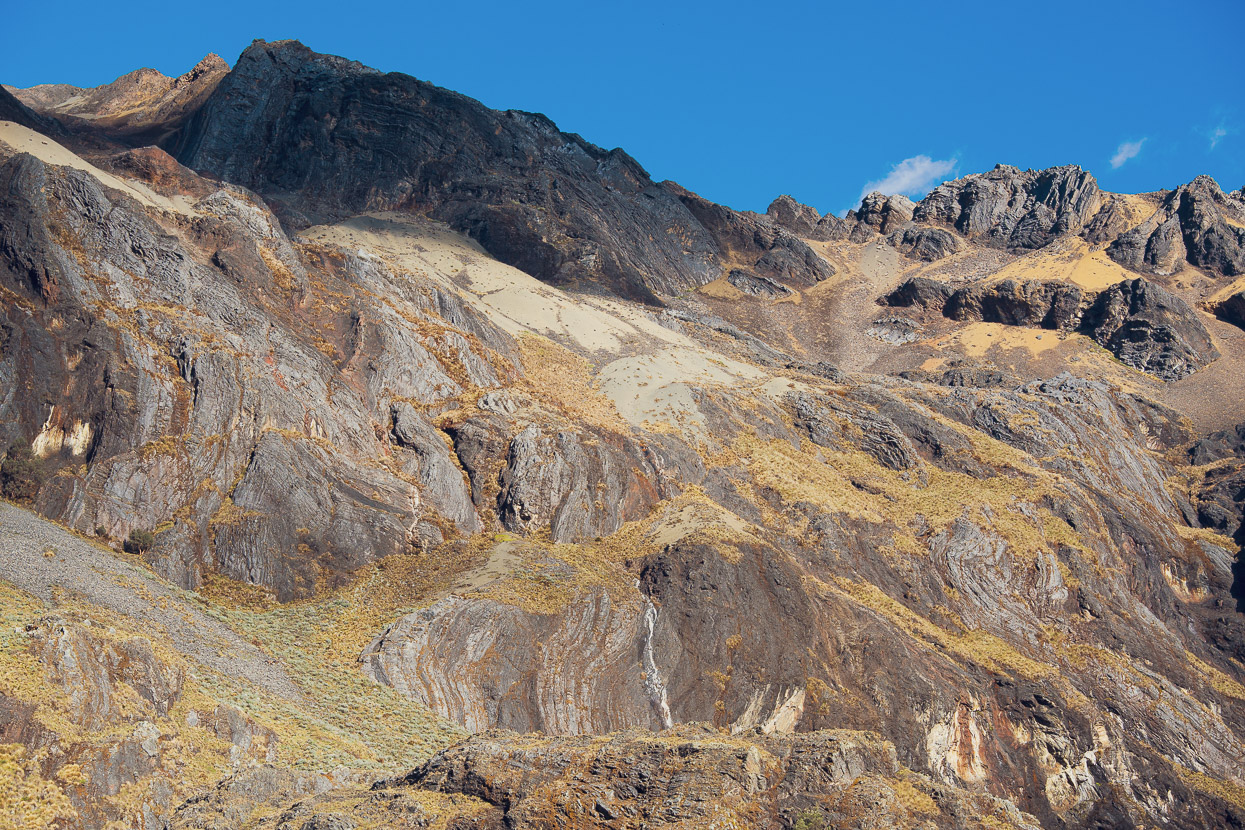
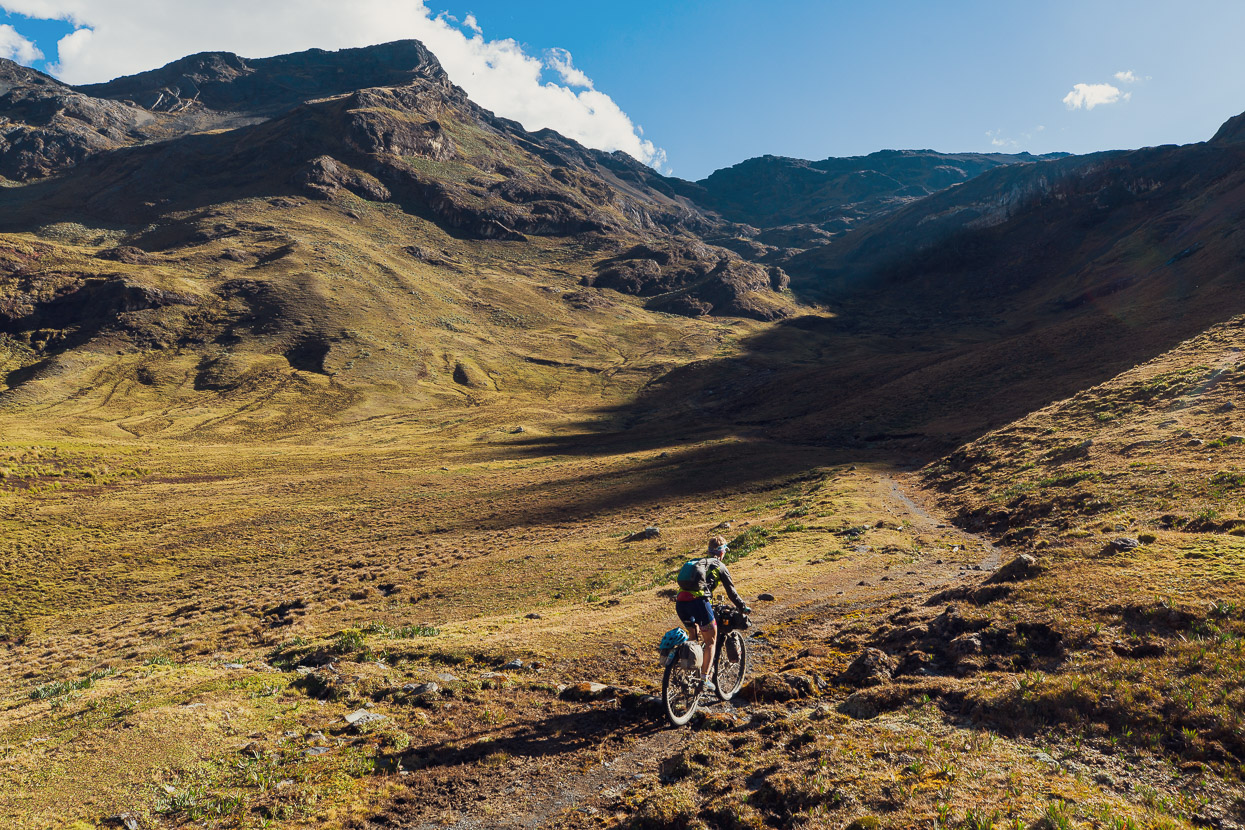
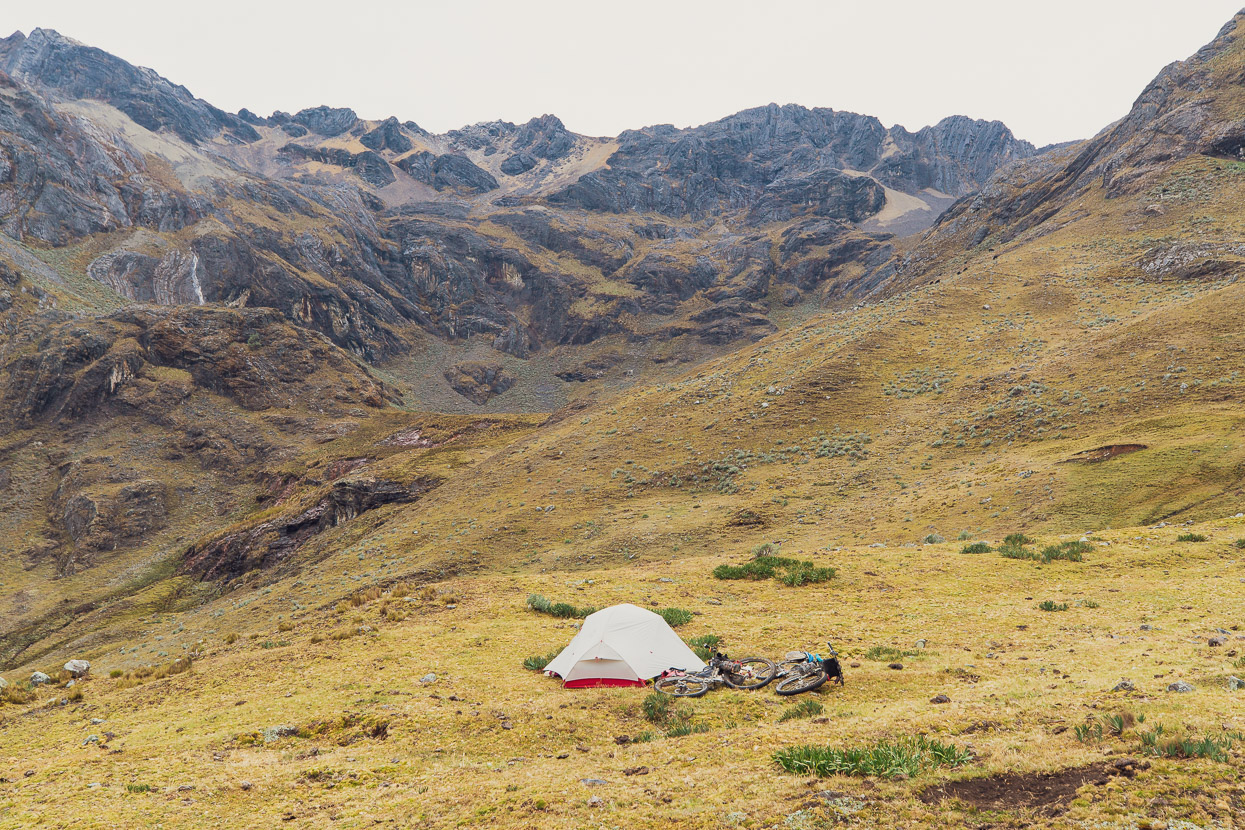
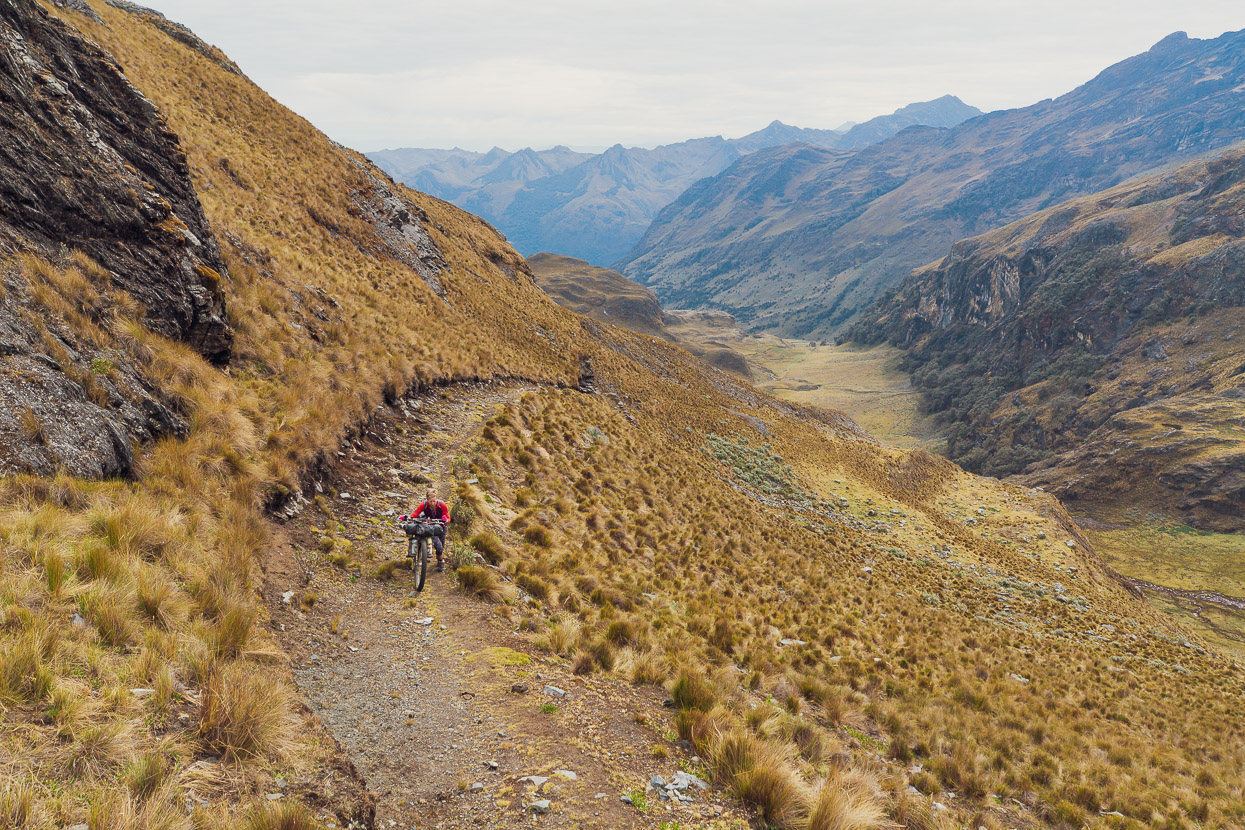
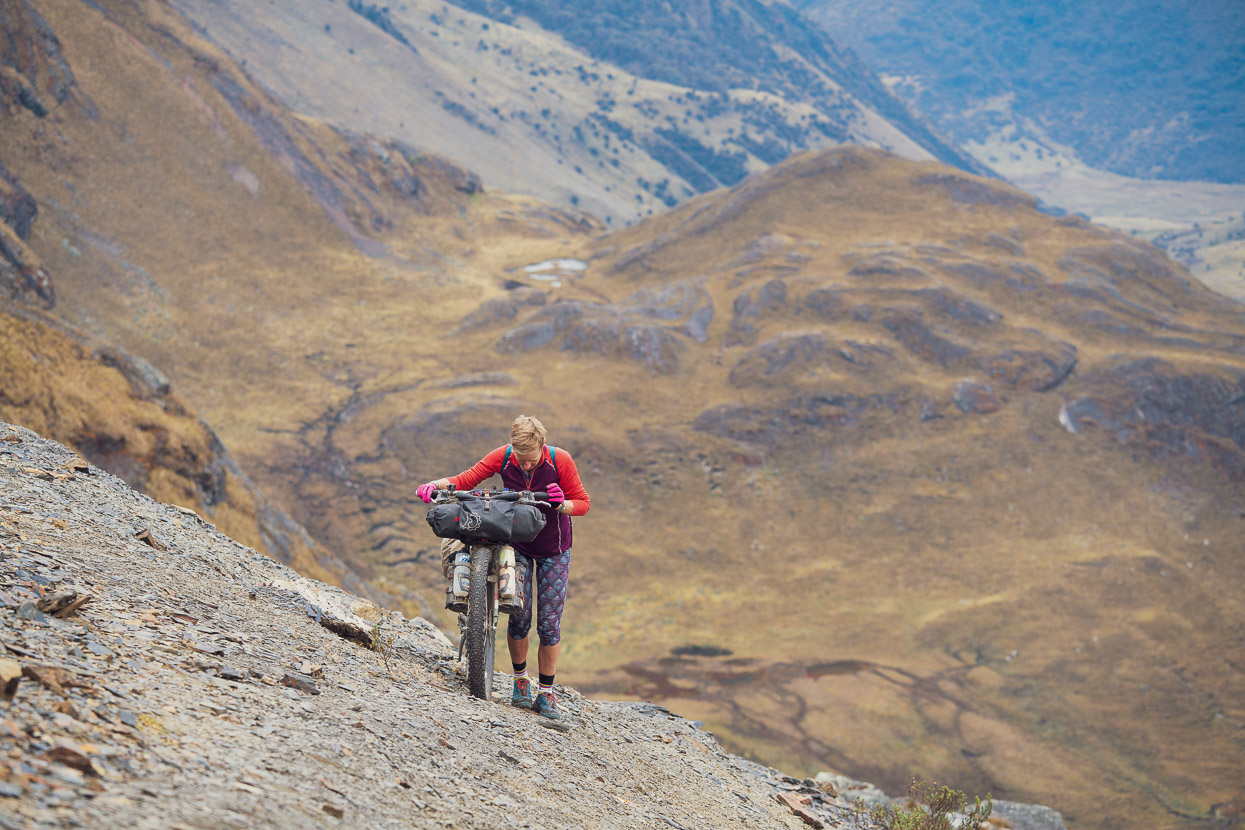
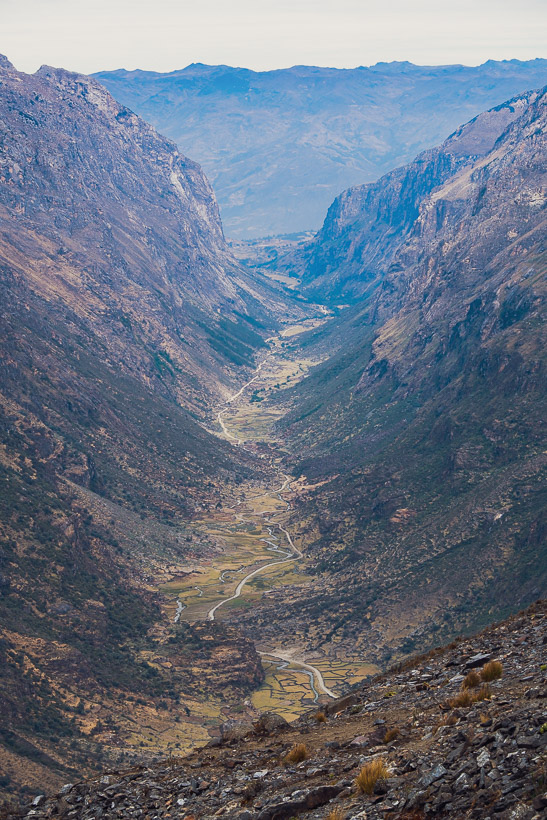
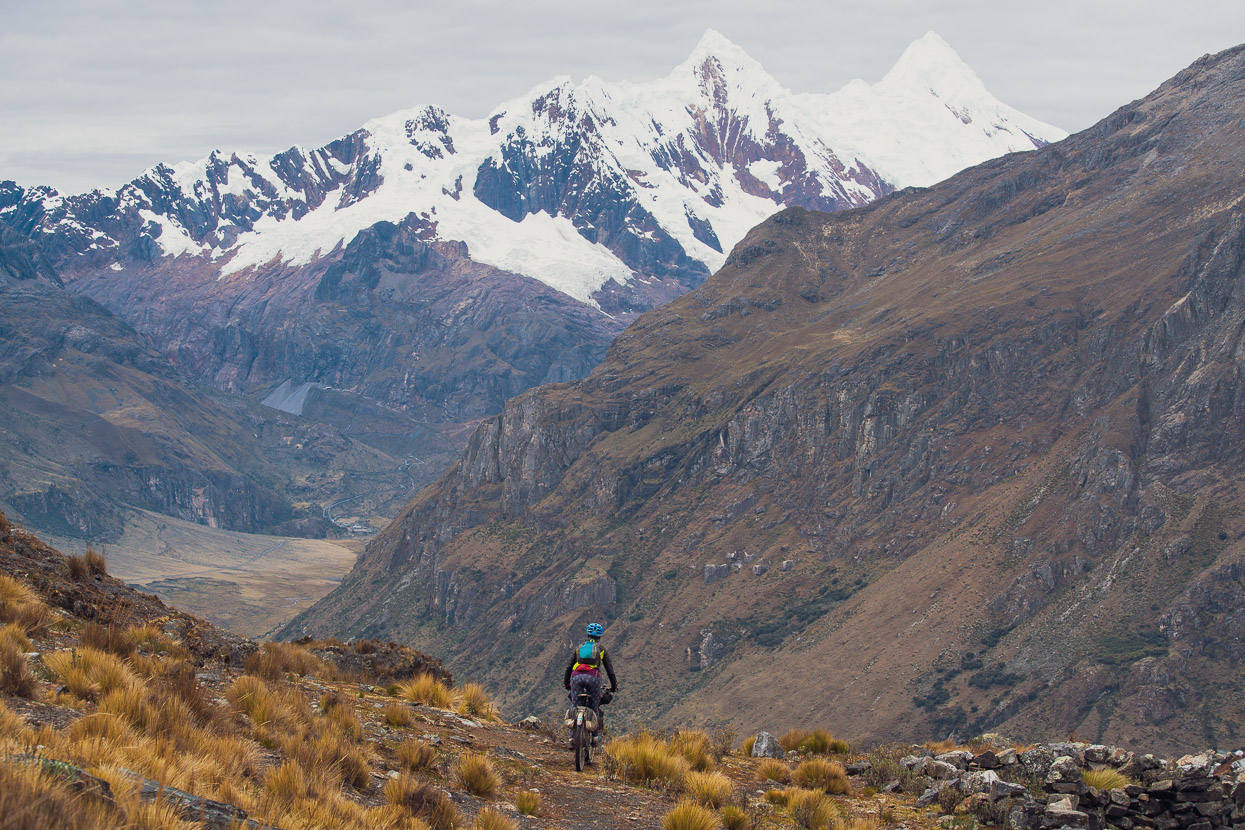
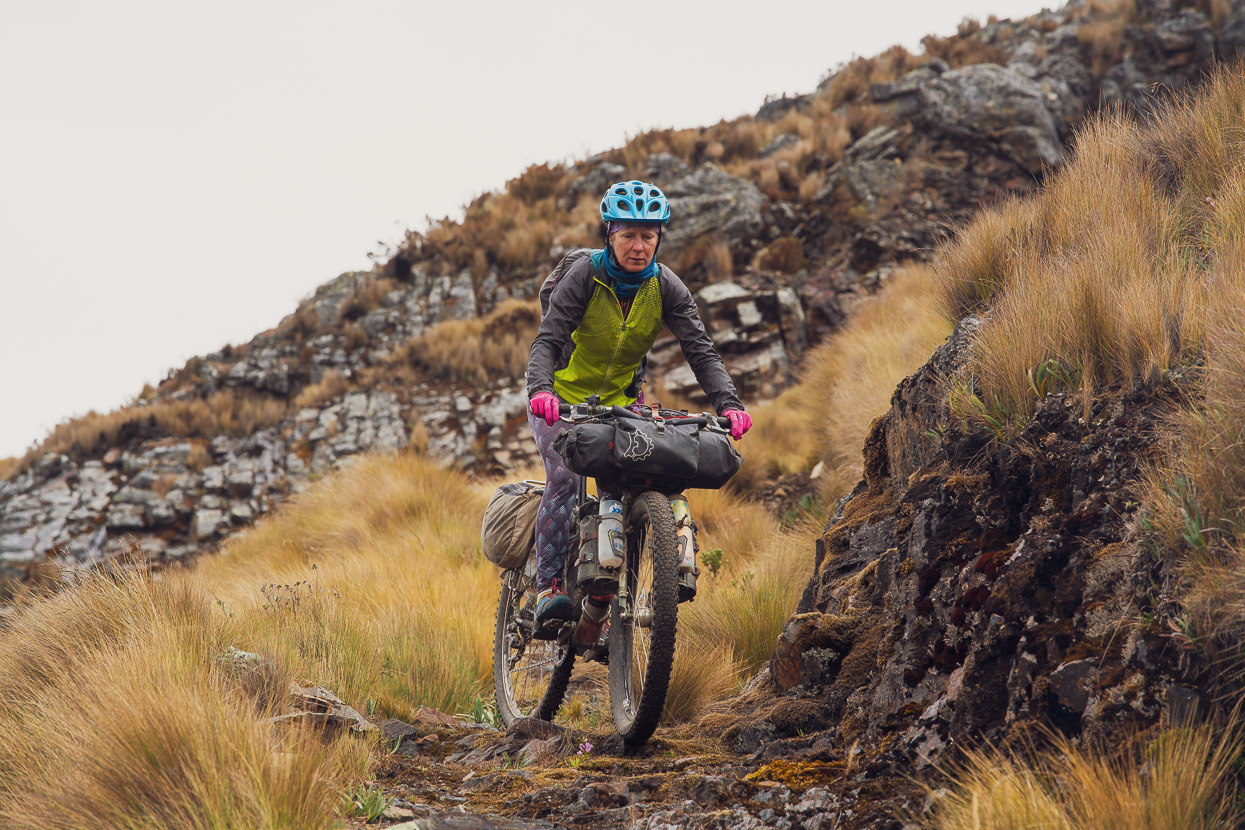
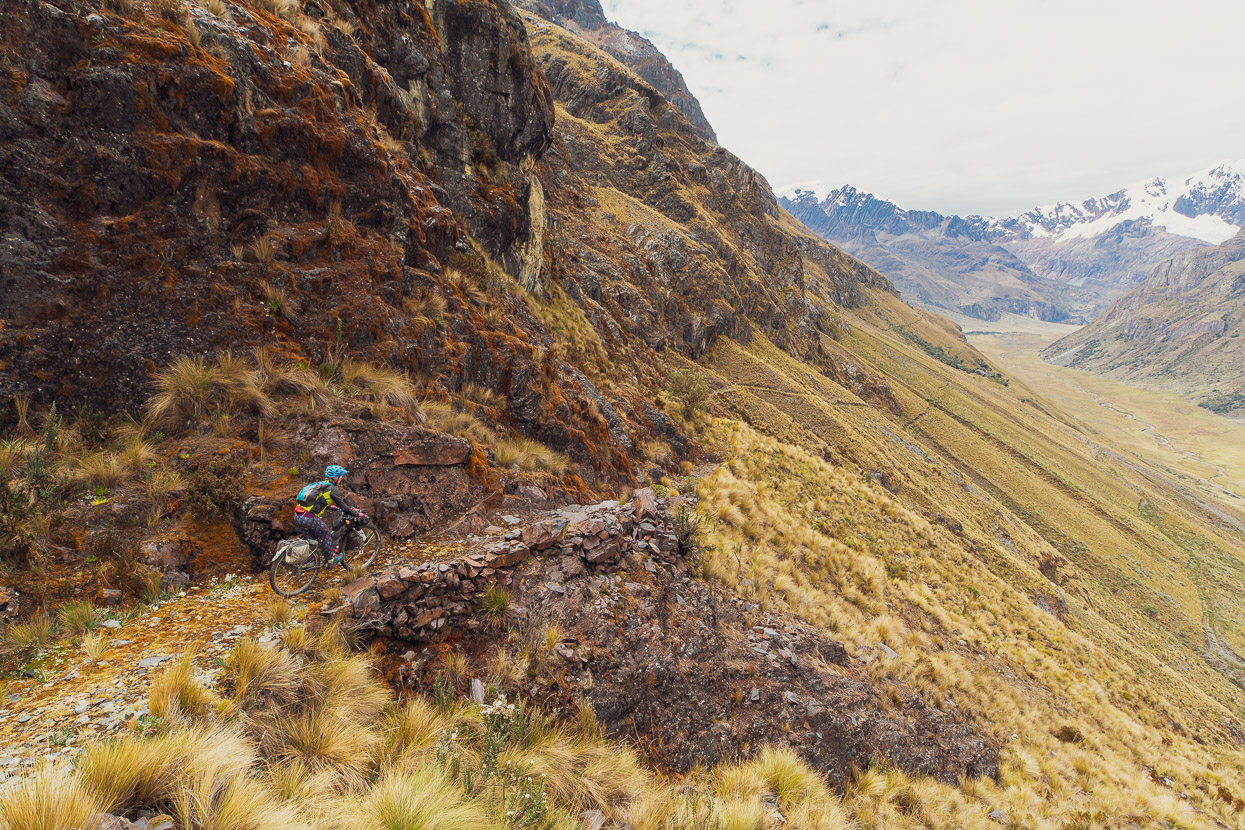
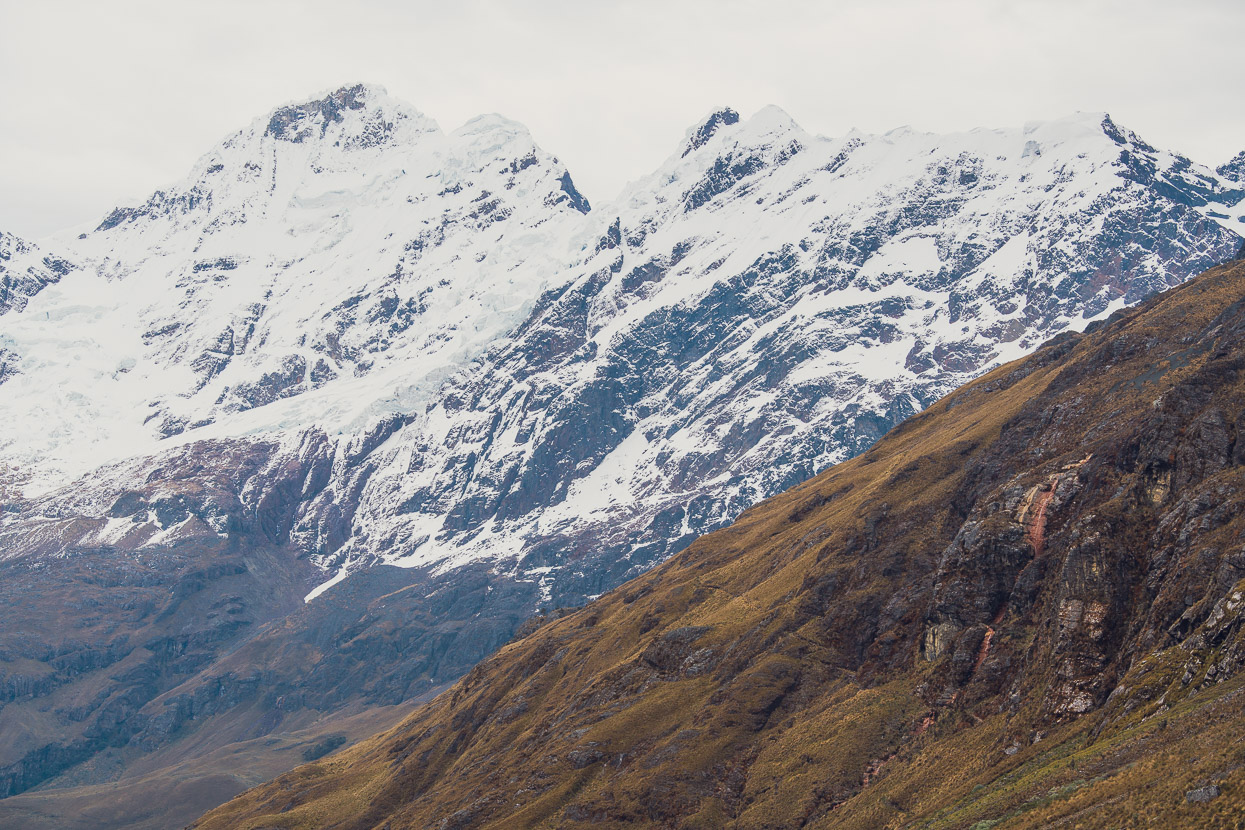
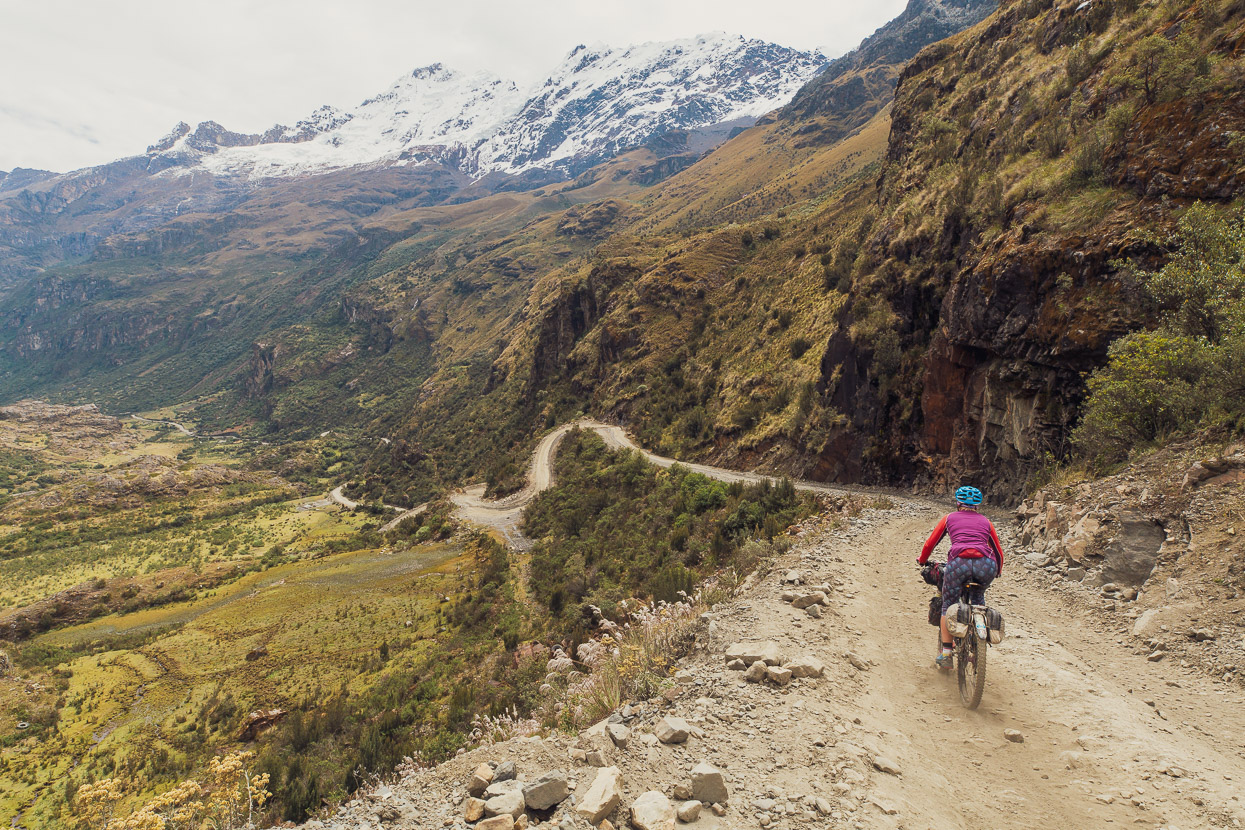
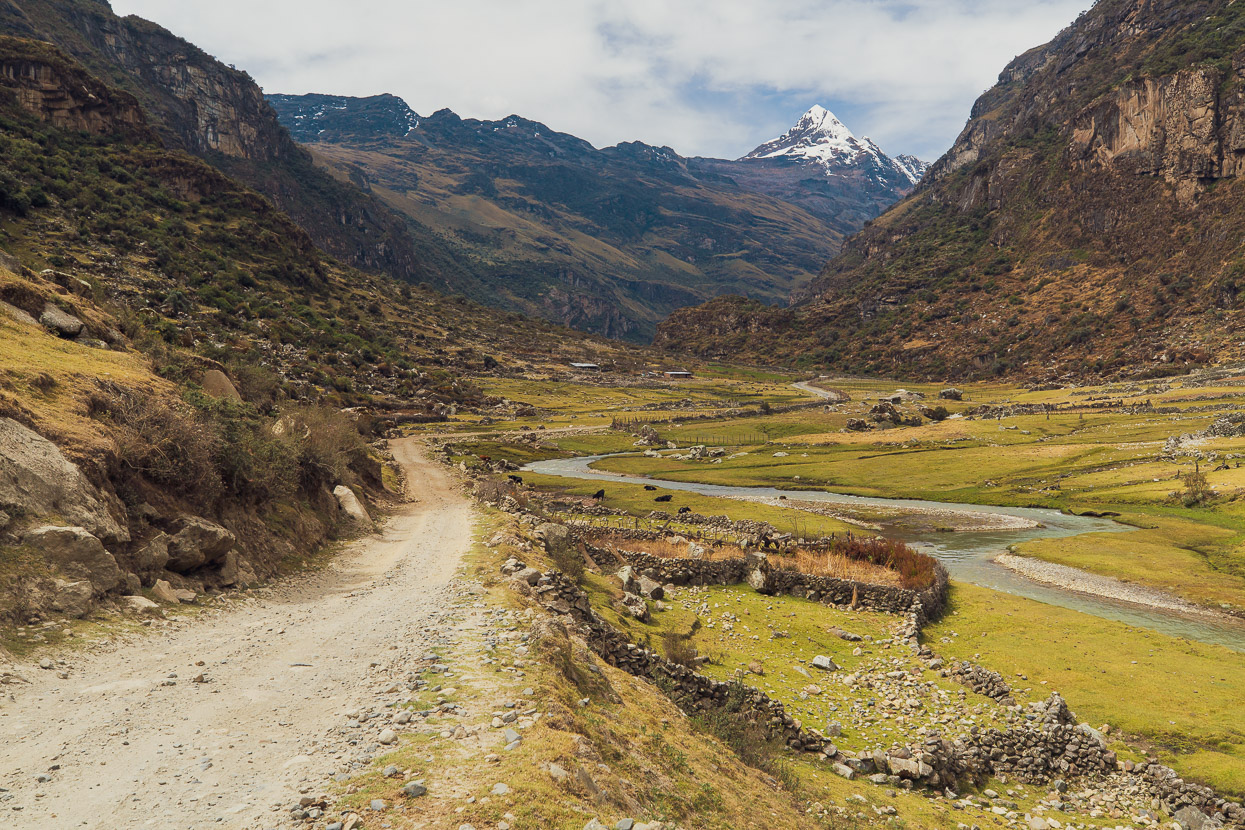
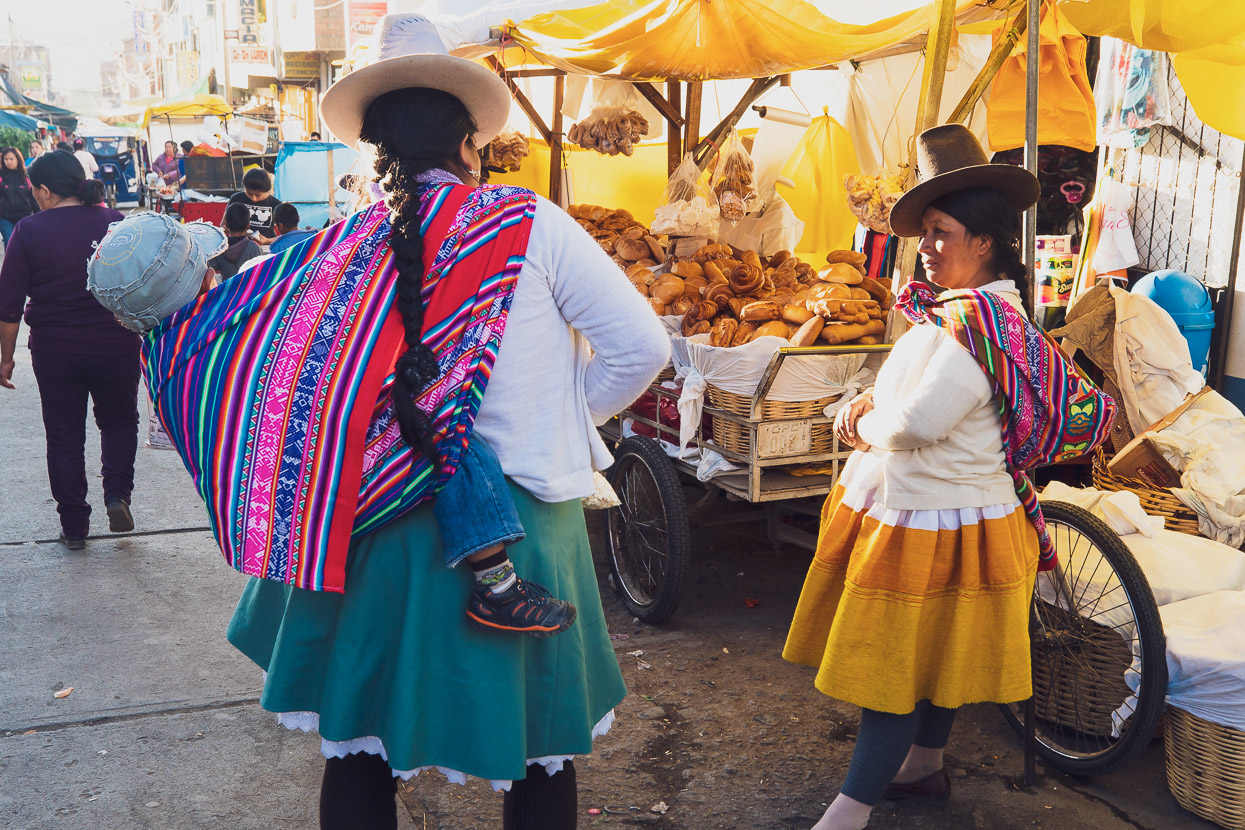





Phew, I feel exhausted just reading this blog, at sea level to ! And with each report, I think you’re growing crazier & crazier !!! Parts of Perú remind me of the area round Bannockburn.
Didn’t Hannah have an iPhone stolen off her bike round the Panama area ? Can’t begin to tell you how much I am enjoying your writings & photography. Keep up the good work. Stay safe.
Sorry to hear about the nicked stuff but the scenery will be over riding those evil thoughts of course. Presume my loot for a deserved beer for you both has made it out of Pay Pal’s pockets? Must have been a dag meeting up with Jo and Al – Home today I think! Love your blog.
Hi Mark and Hanna
Firstly, thank you for taking the effort and time to maintain a record of your Journey. I have been following since March ish and have the photographs have been fantastic and have enjoyed reading your thoughts and observations. This is a year of vicarious travel as am spending the winter/year in Antarctica with the Aussies at Davis Station. Next year (and beyond) we are back on the bike and will return to Sur America so the info / facts have also been very useful in terms of forming a plan.
I have read many of your blogs whilst tapping away on the trainer. Continue to enjoy your journey and thanks… Simon Cross
Such great photos, thank you for sharing them!
Just came over portachuelo Honda today, and I think you guys may have been the last people over it! The quebrada honda side is completely overgrown and unrideable now, very hard to follow the path in places. Sure was a great hike-a-bike up the east side though! Absolutely beautiful way to cap off the “Triple heart bypass”
Wow – good to know – but sorry you had to find out the hard way! I wonder why it fell into such disuse?